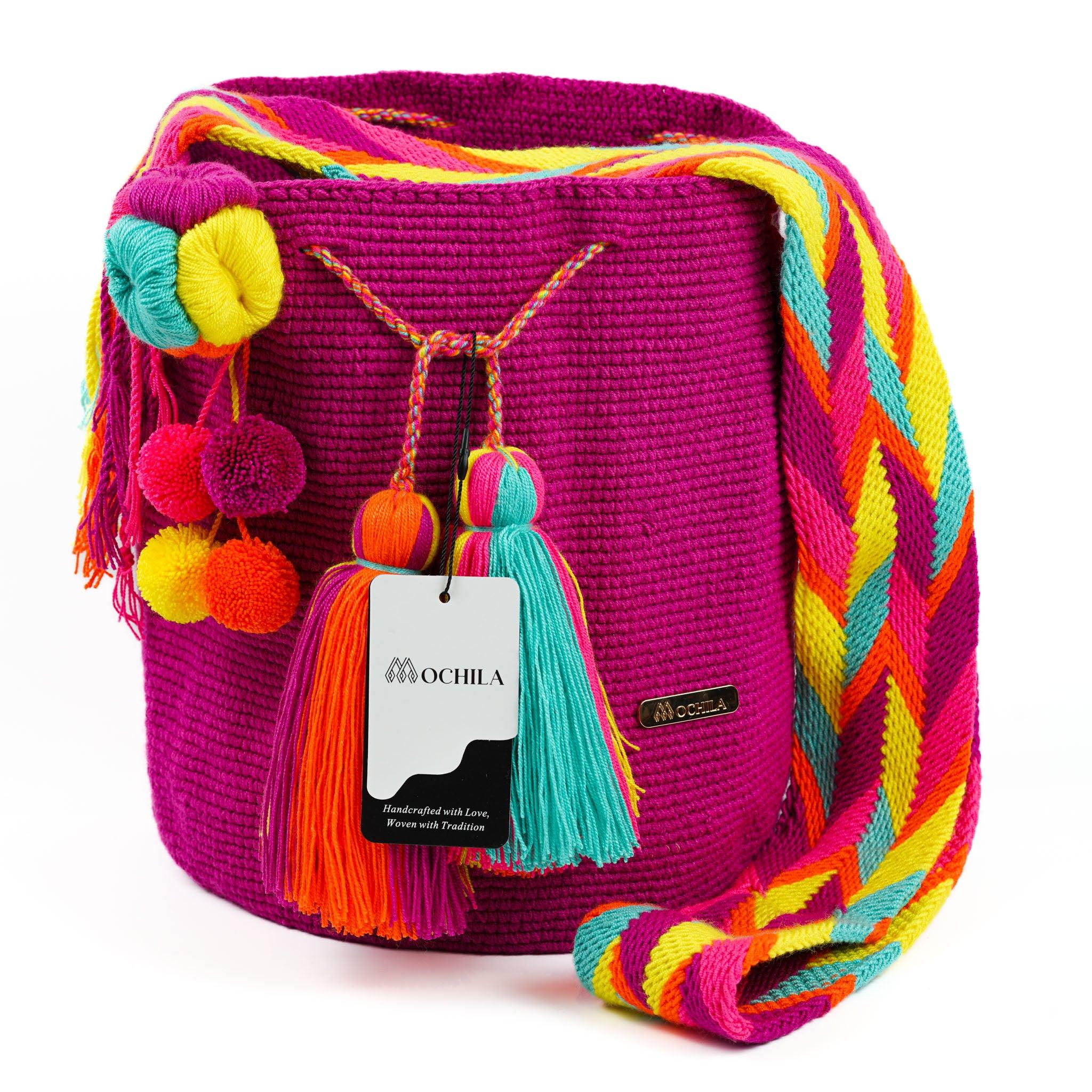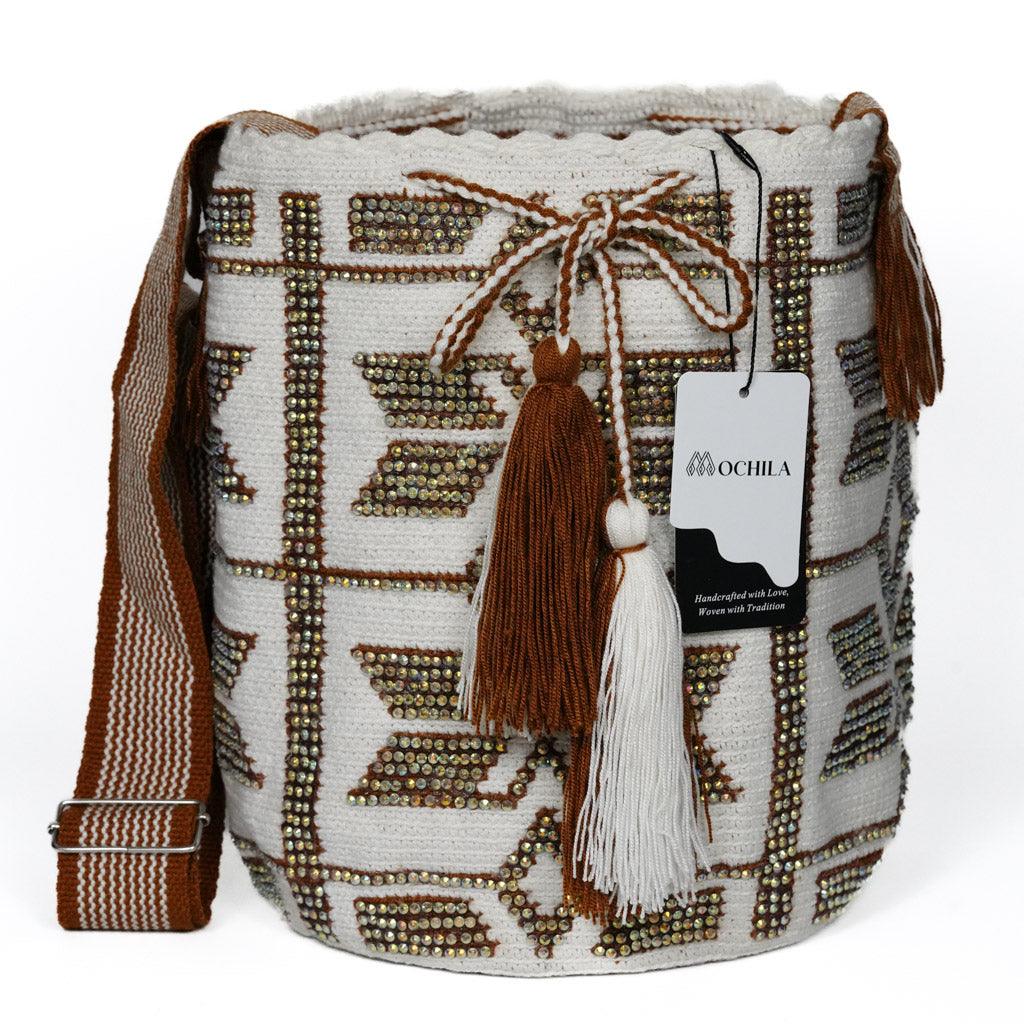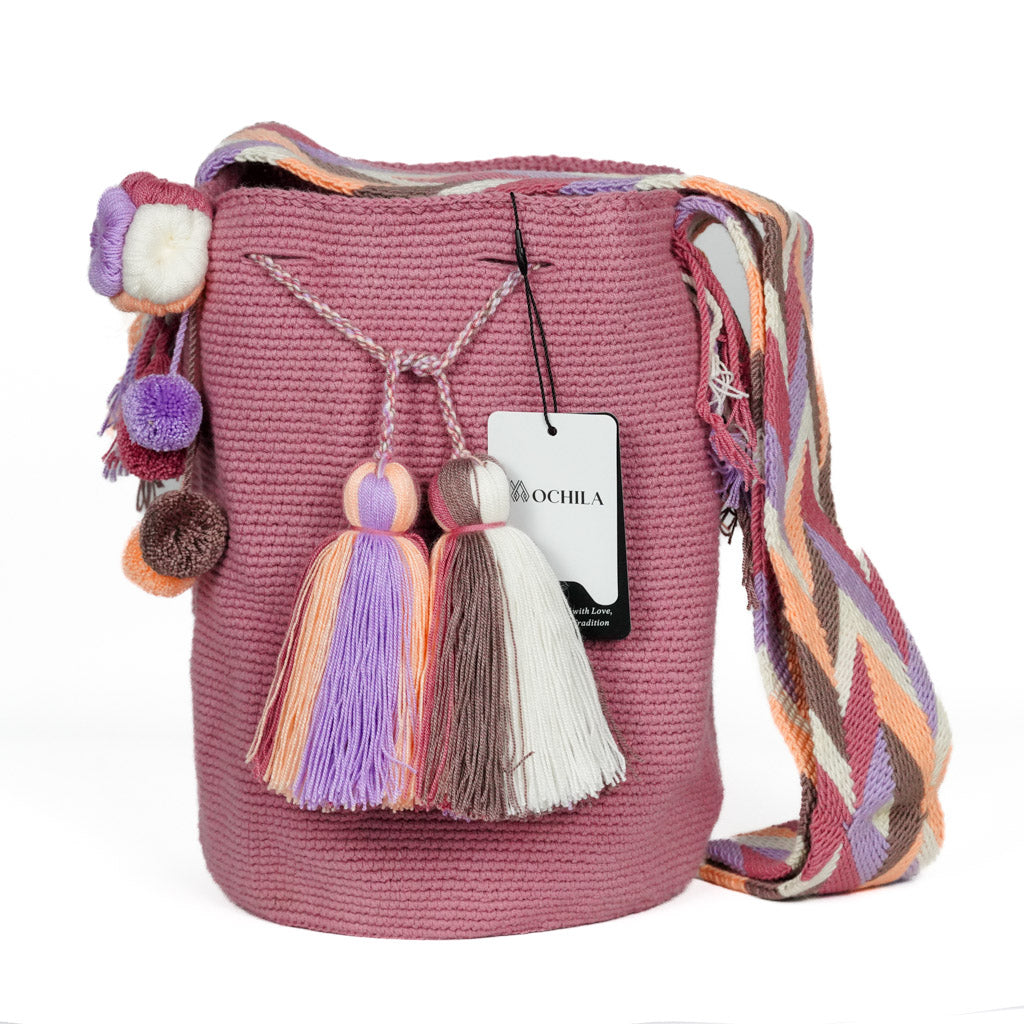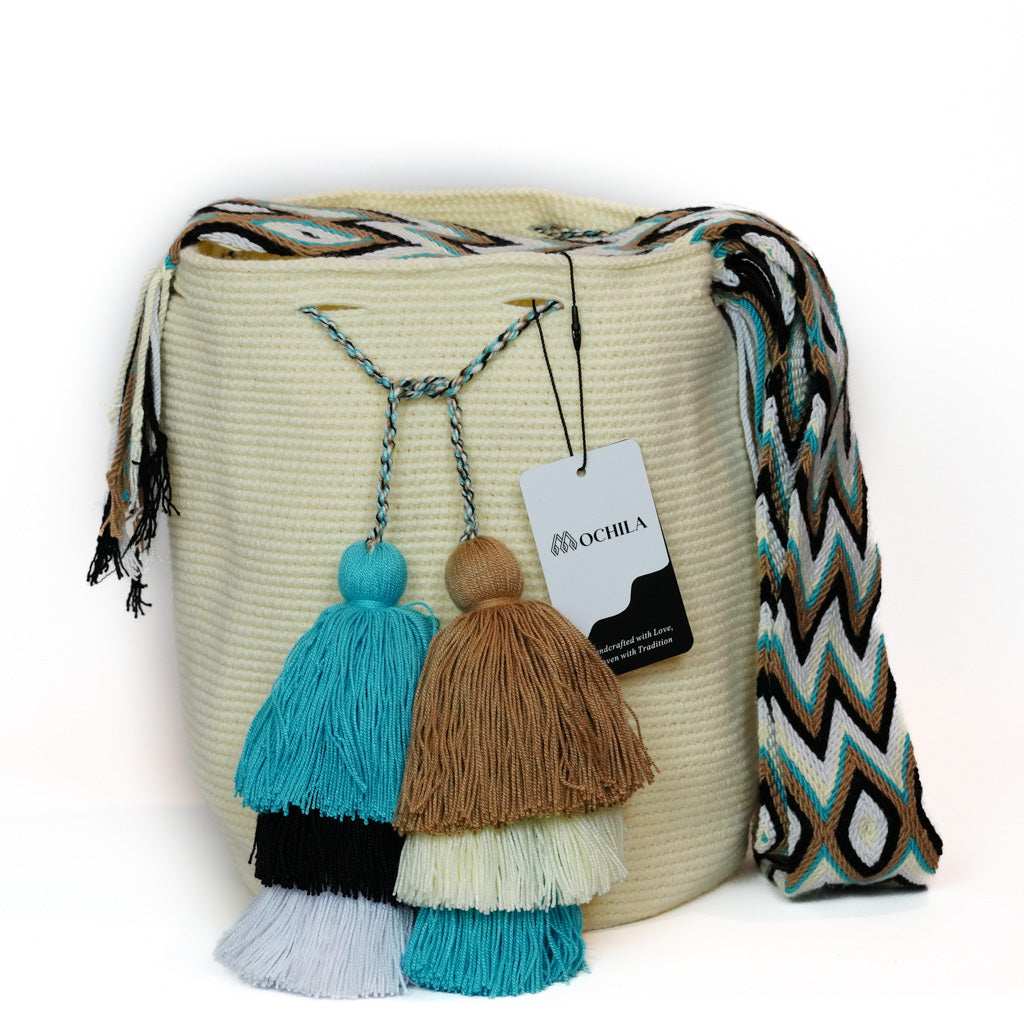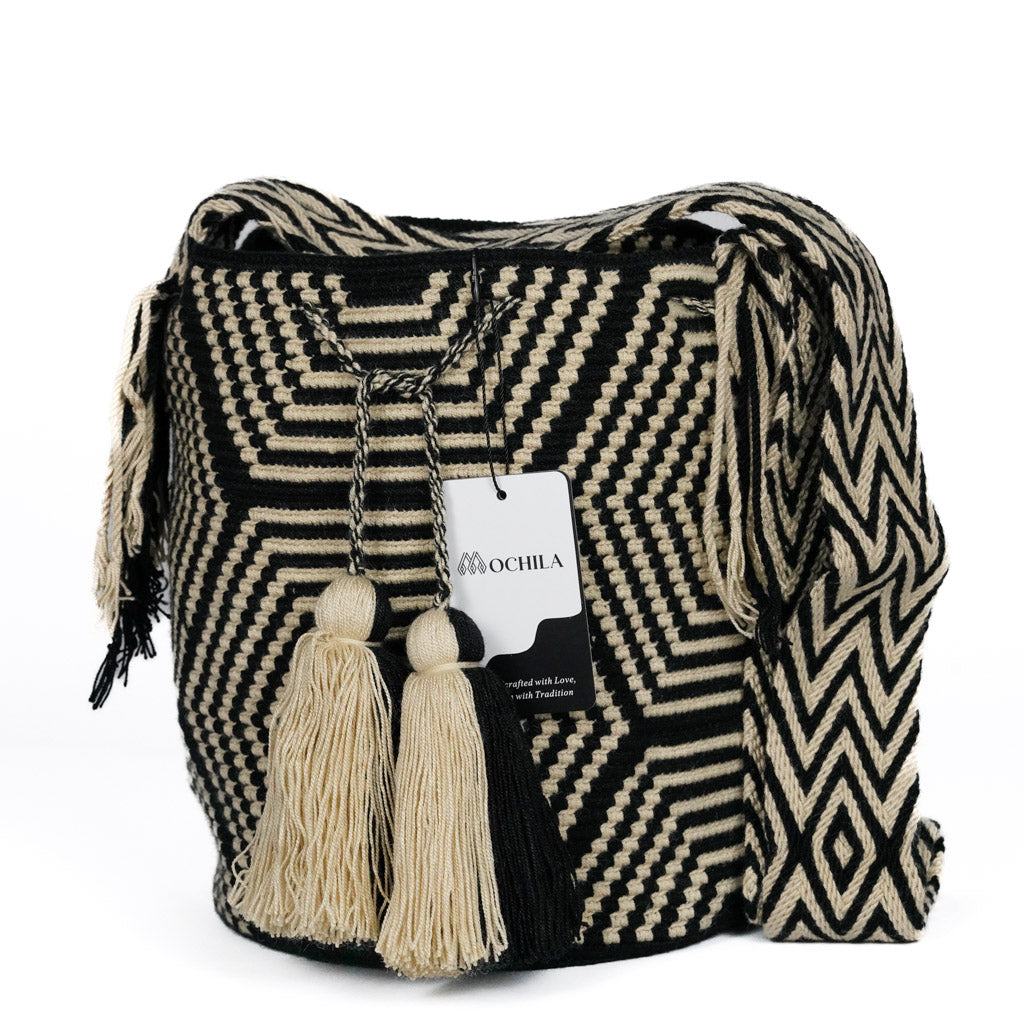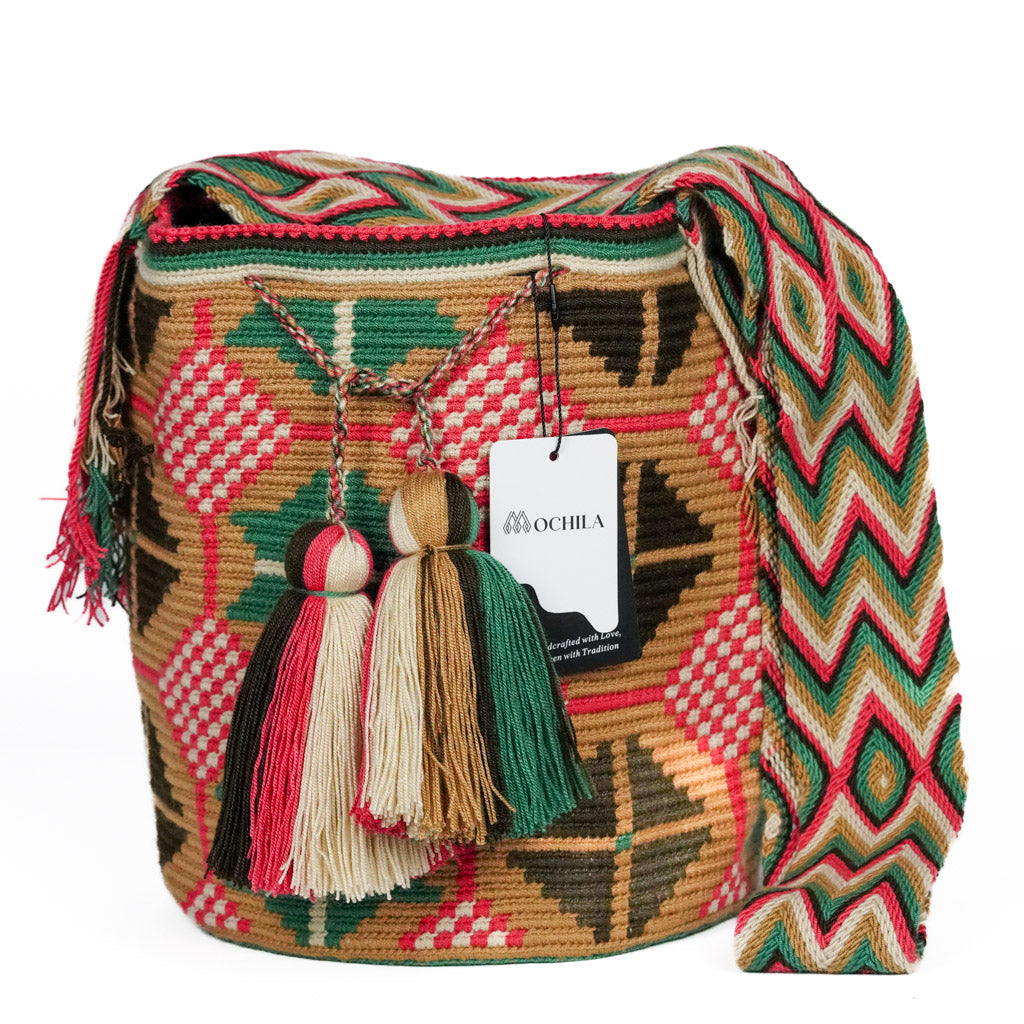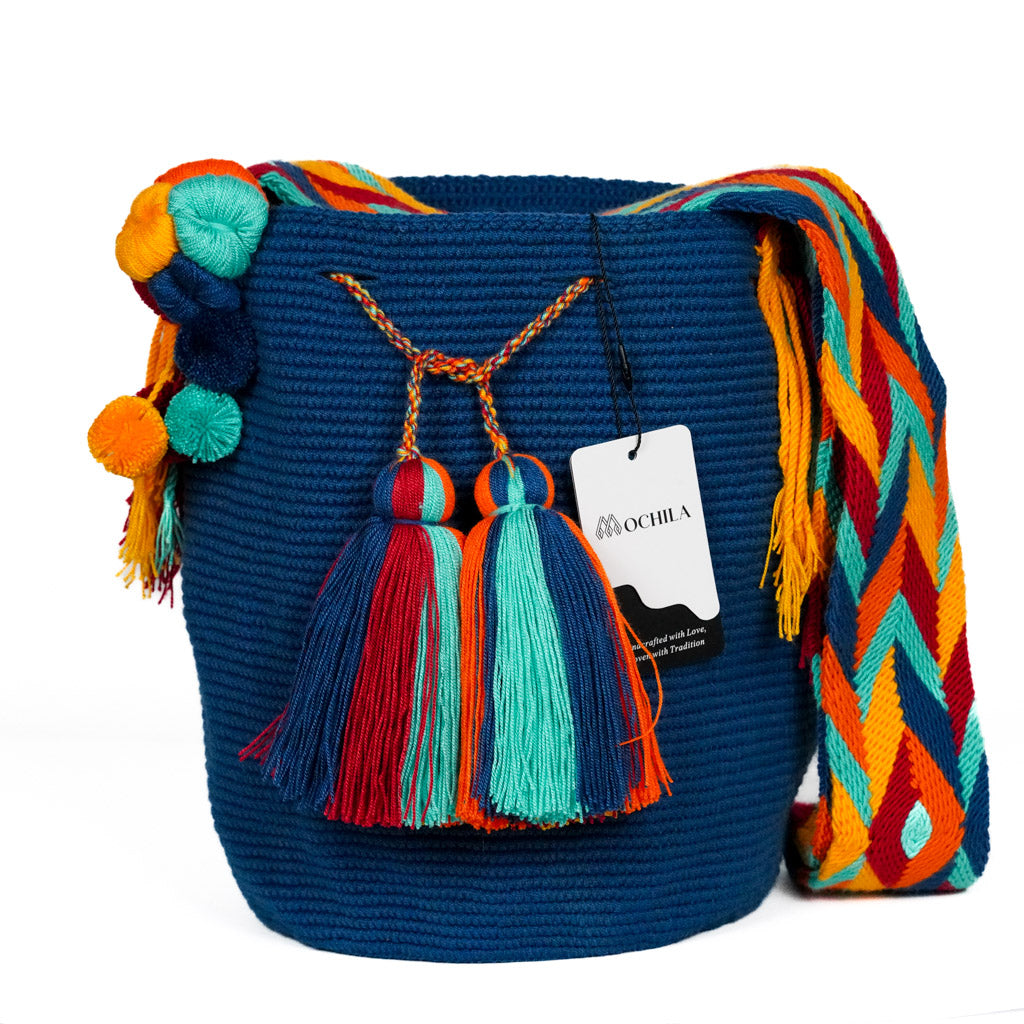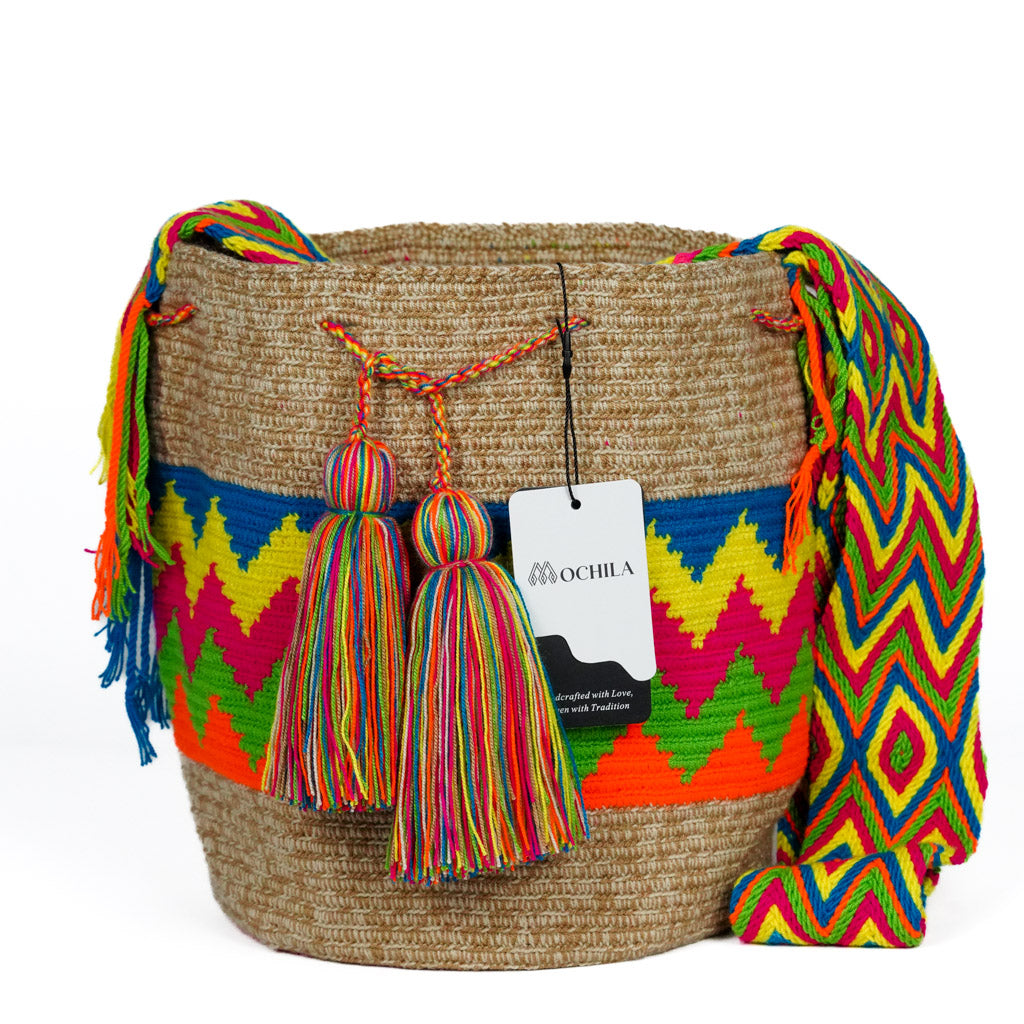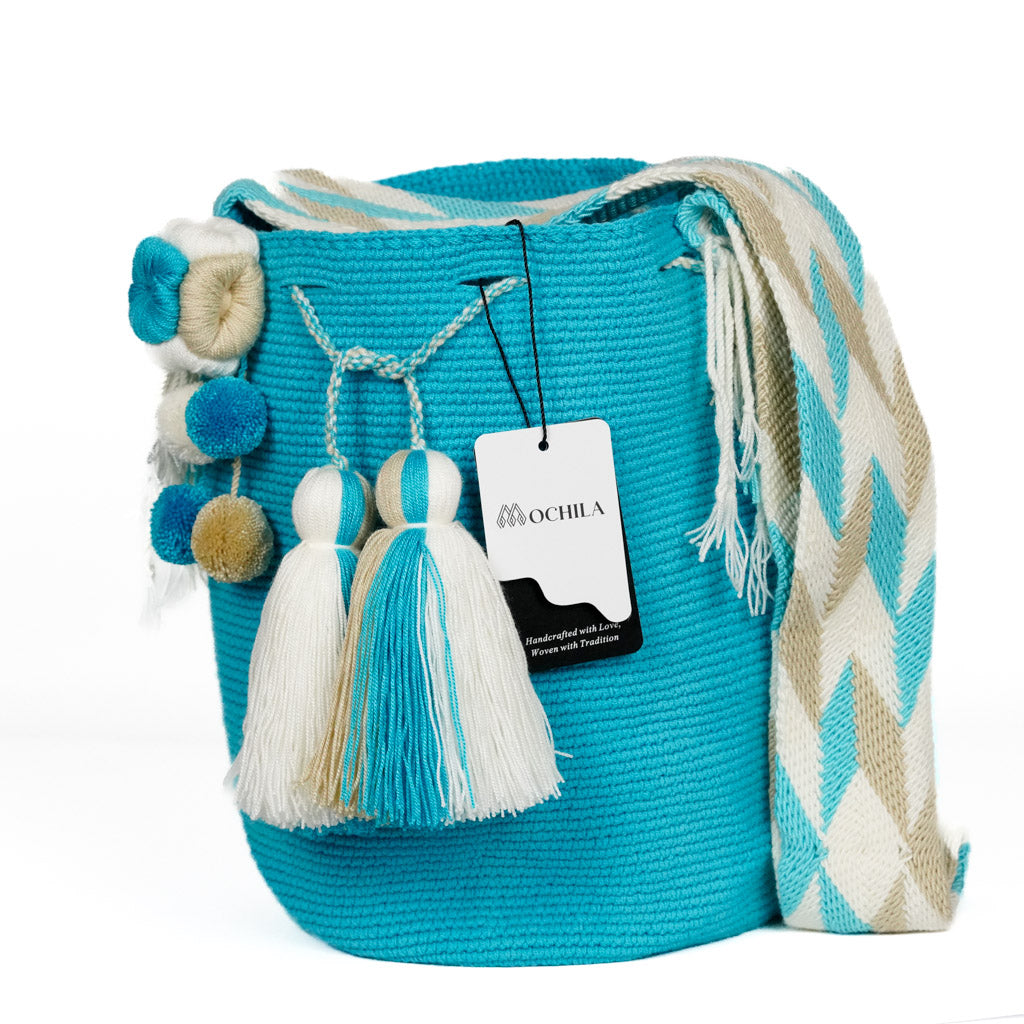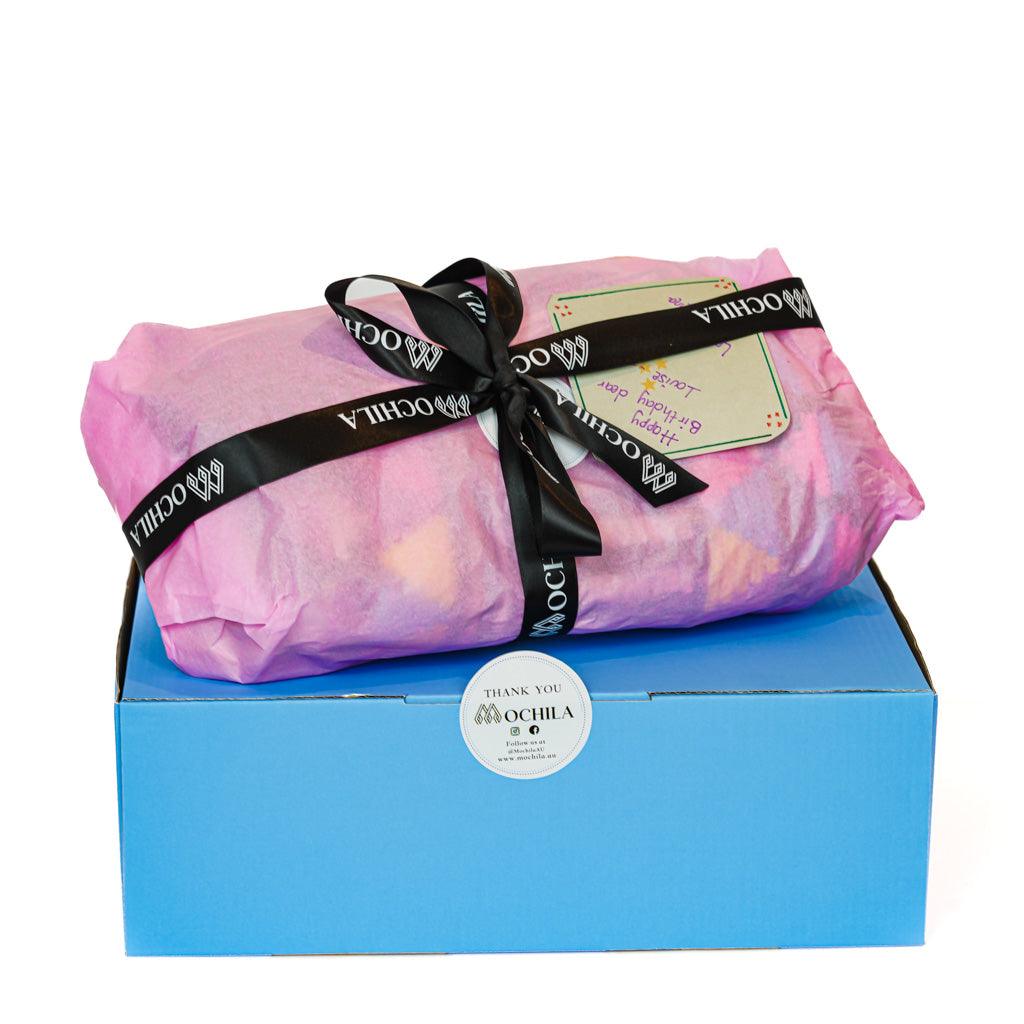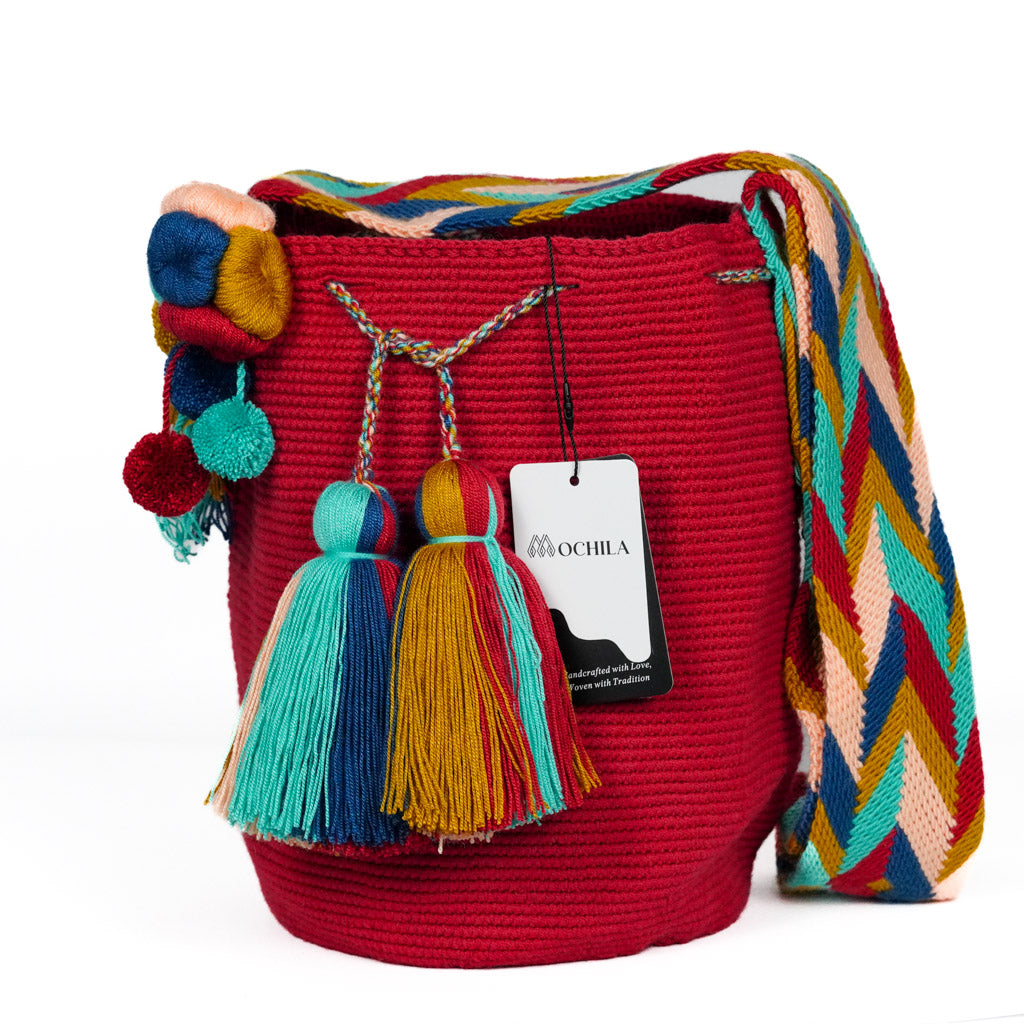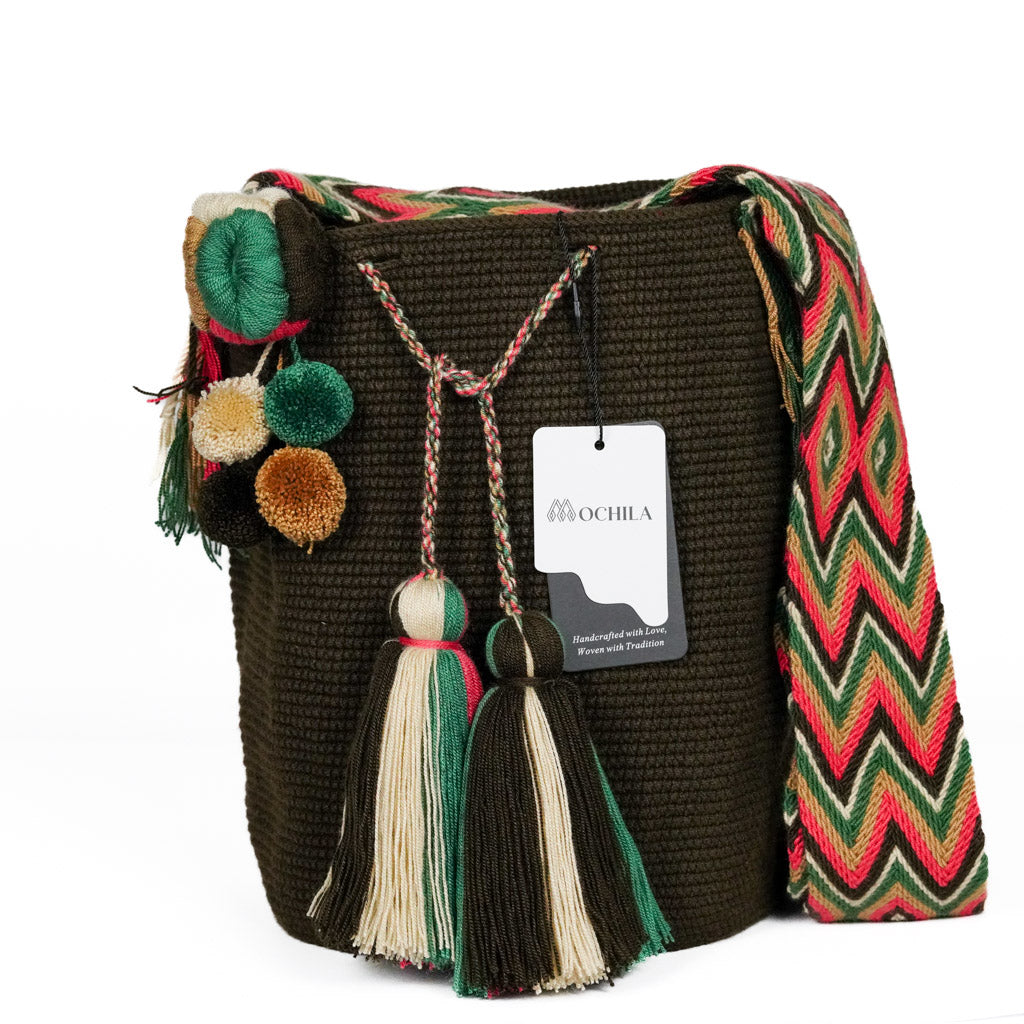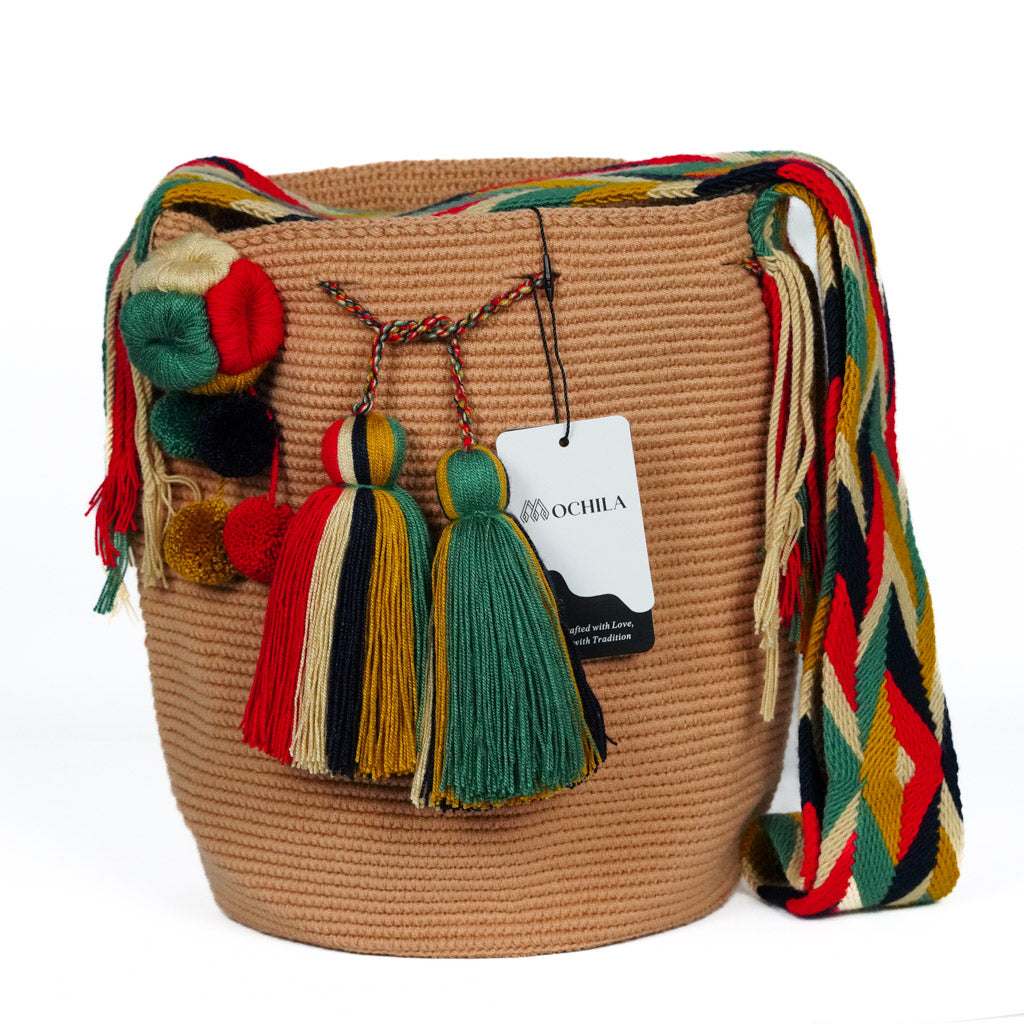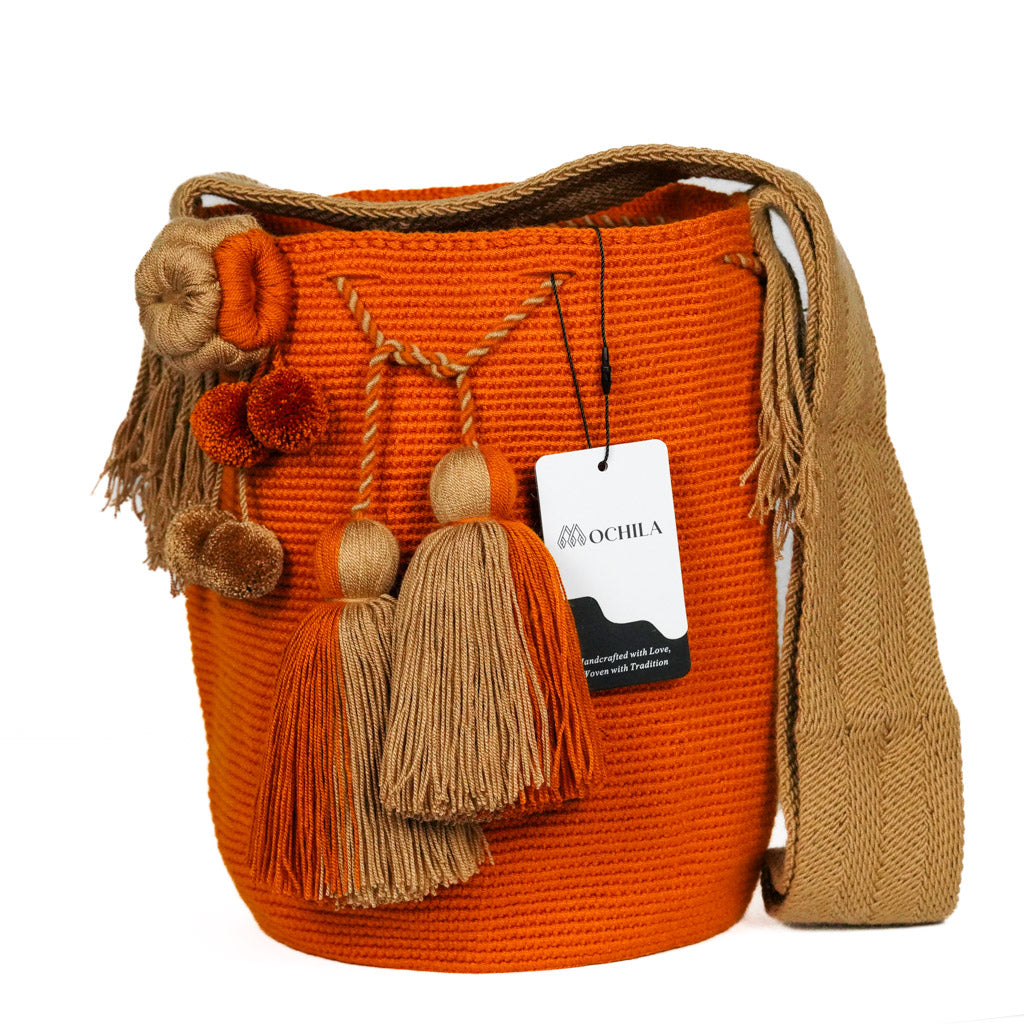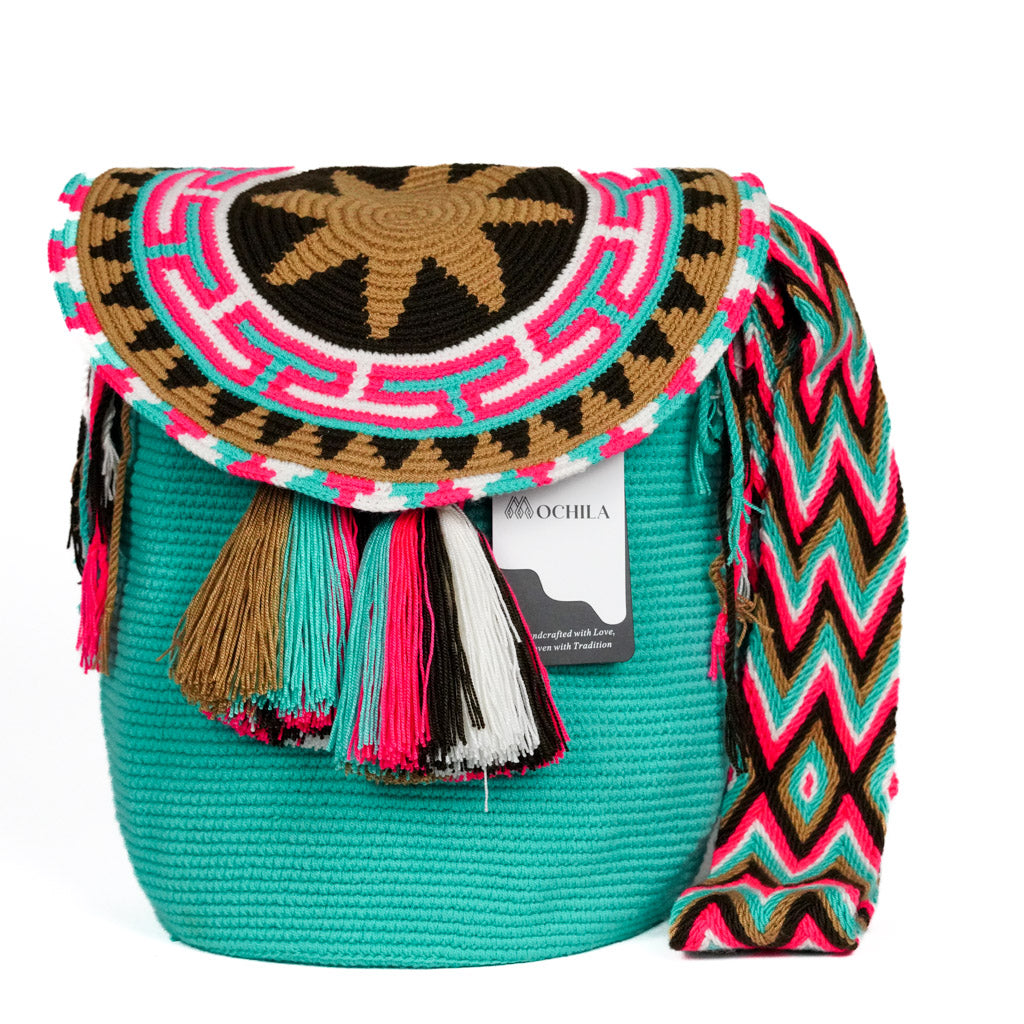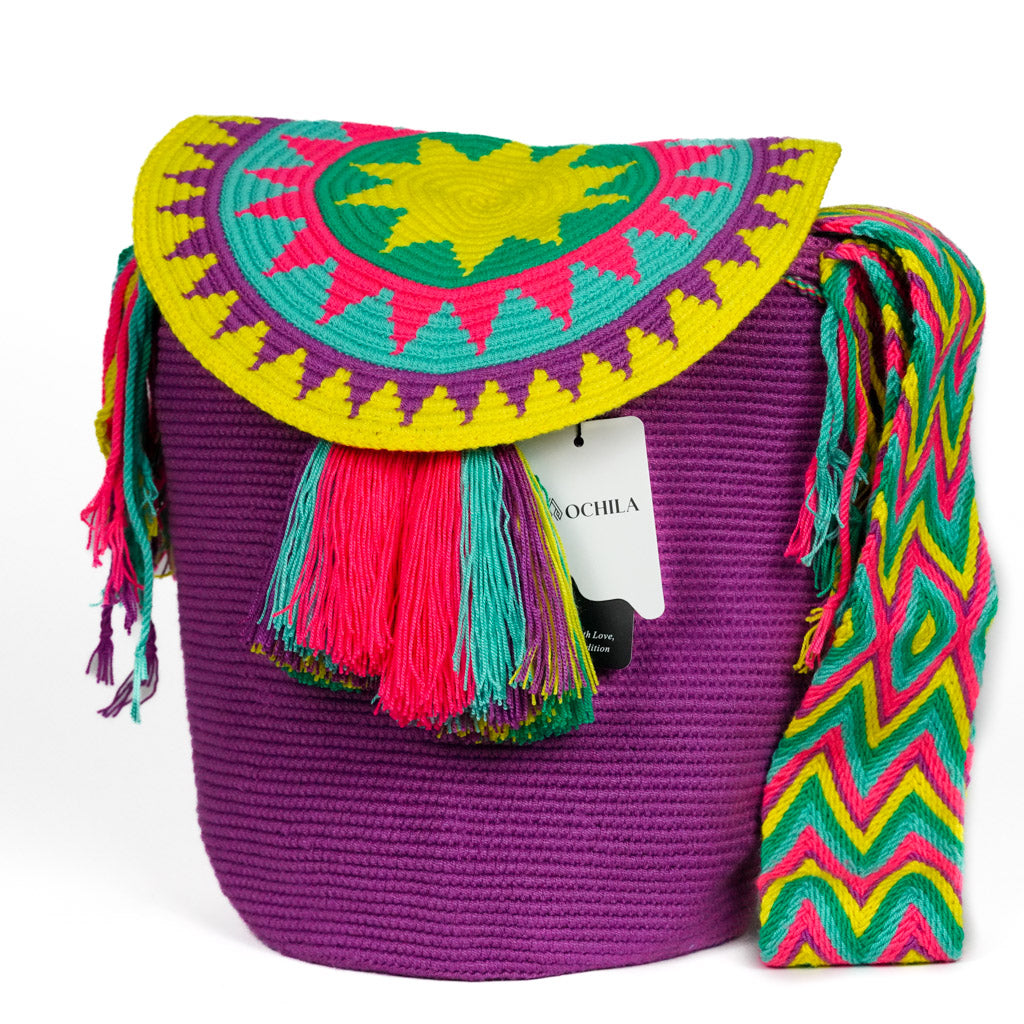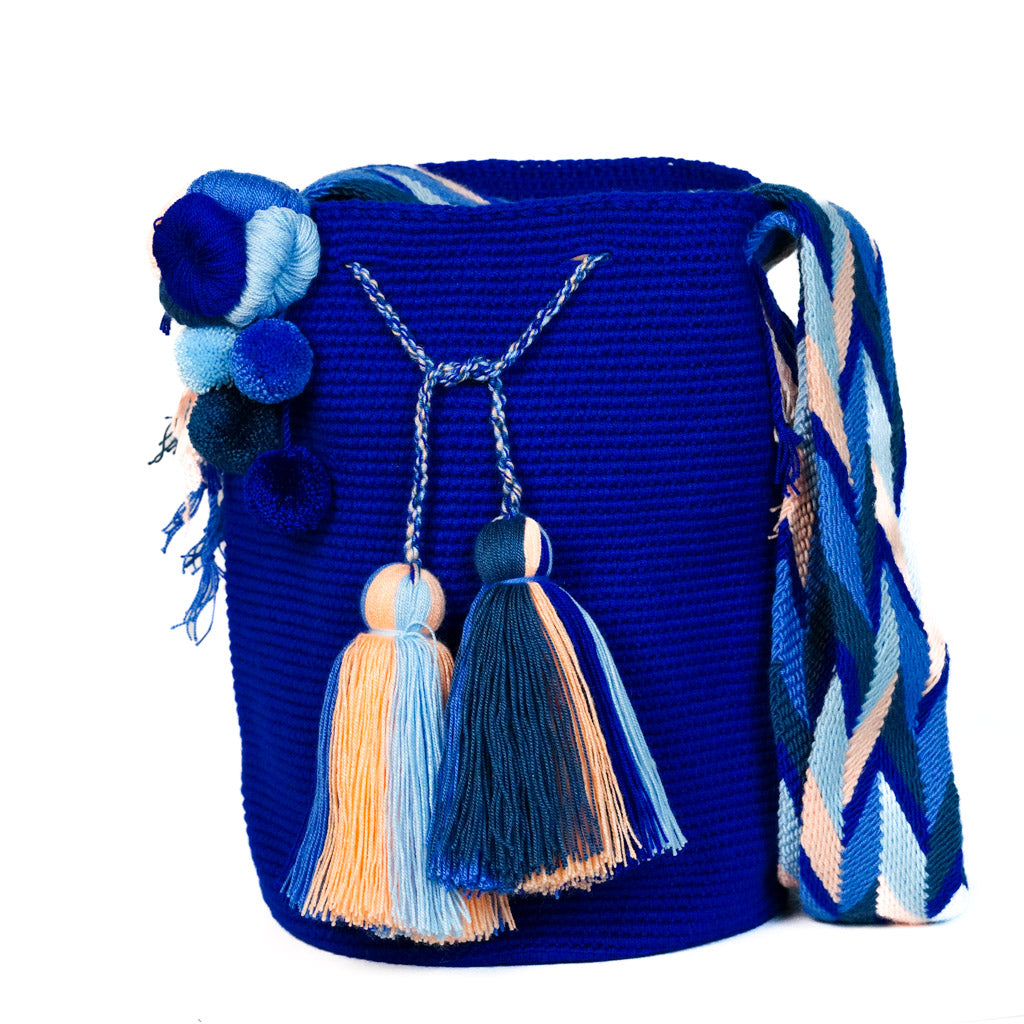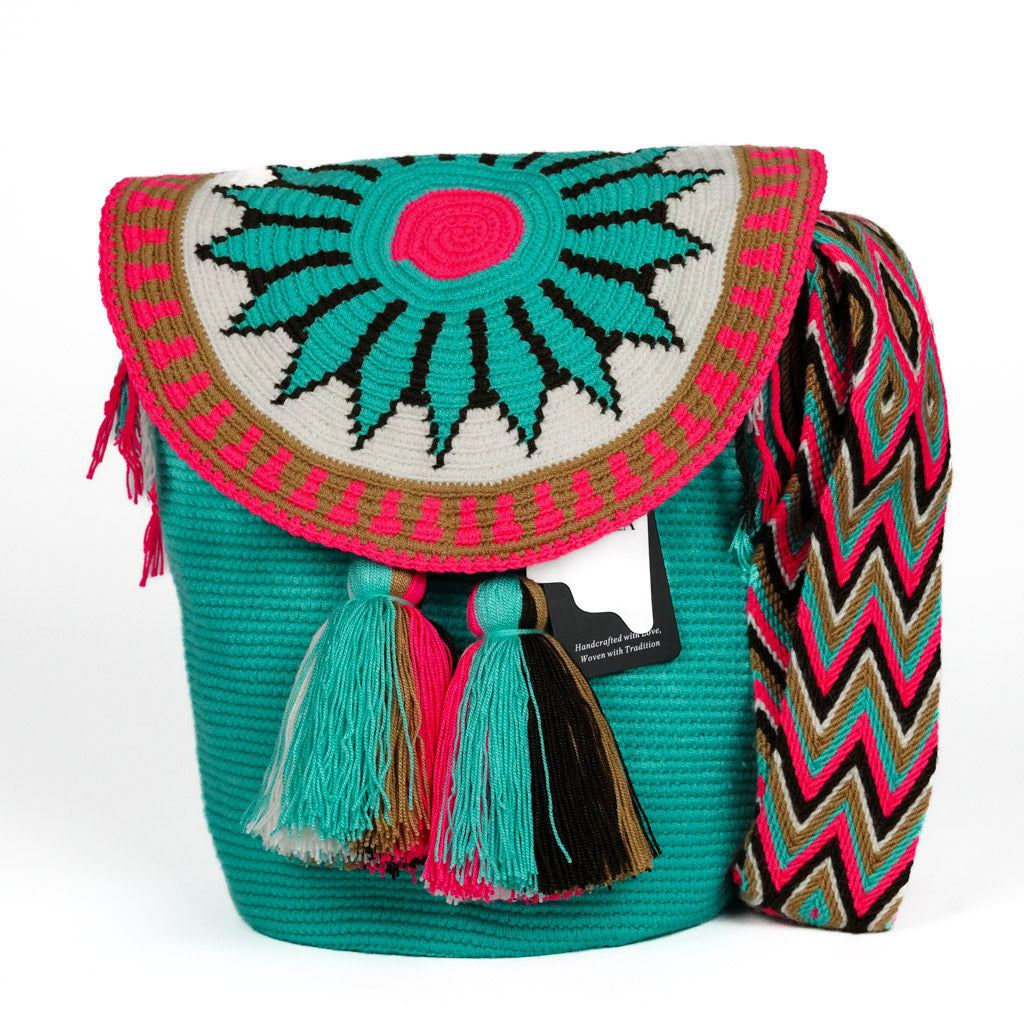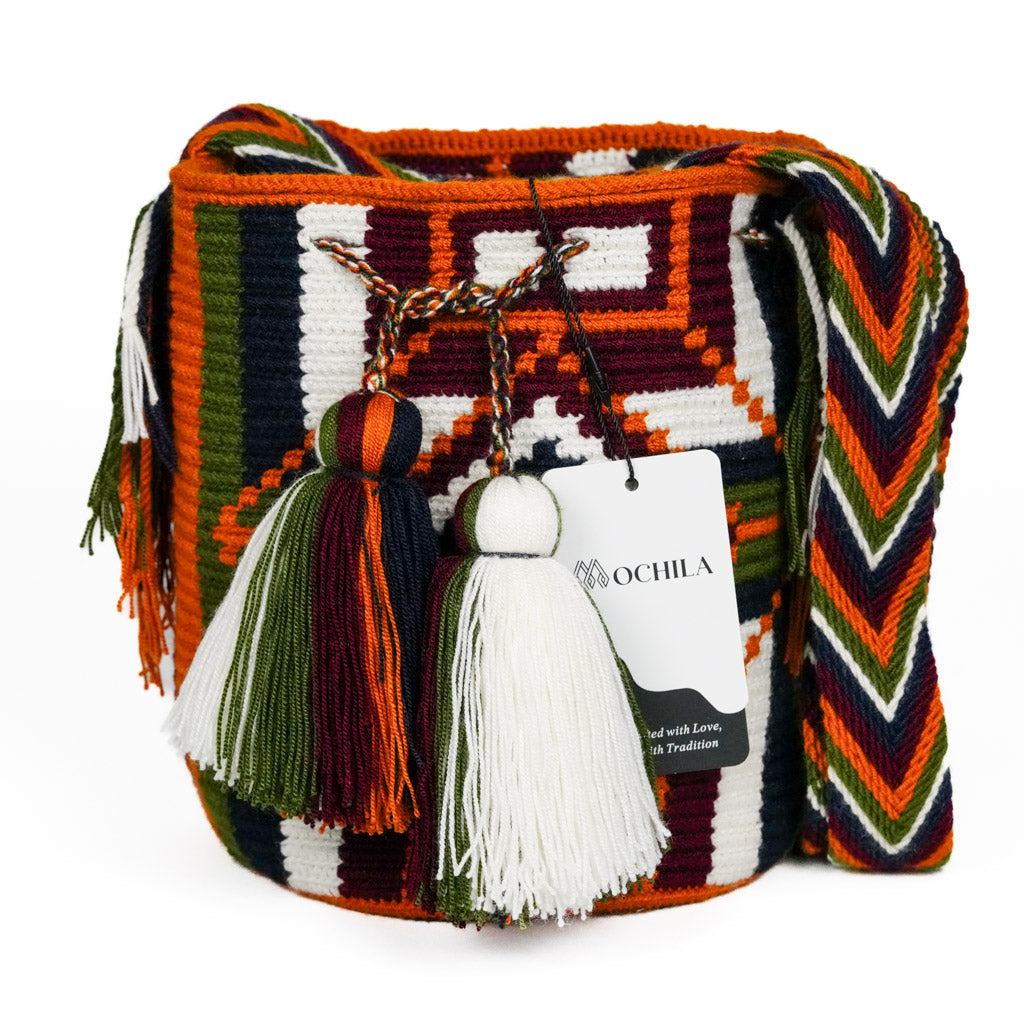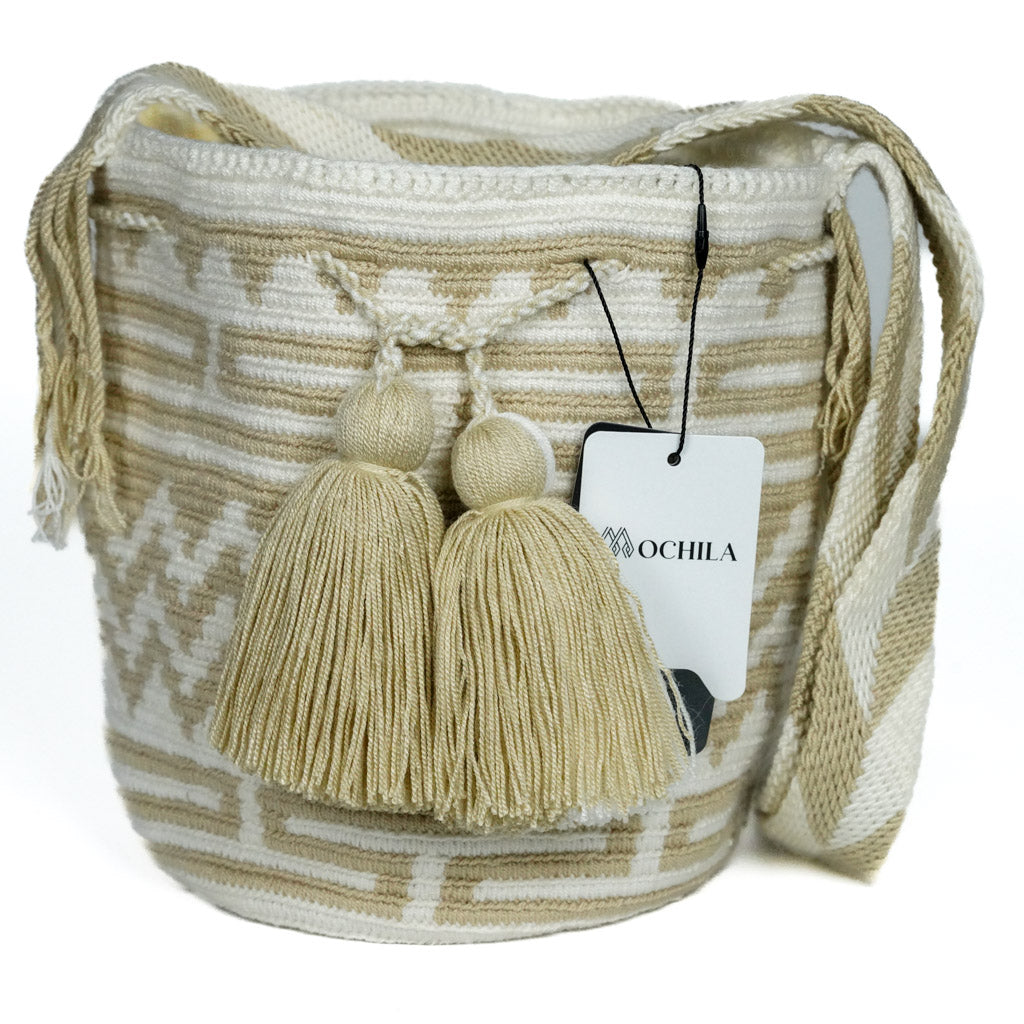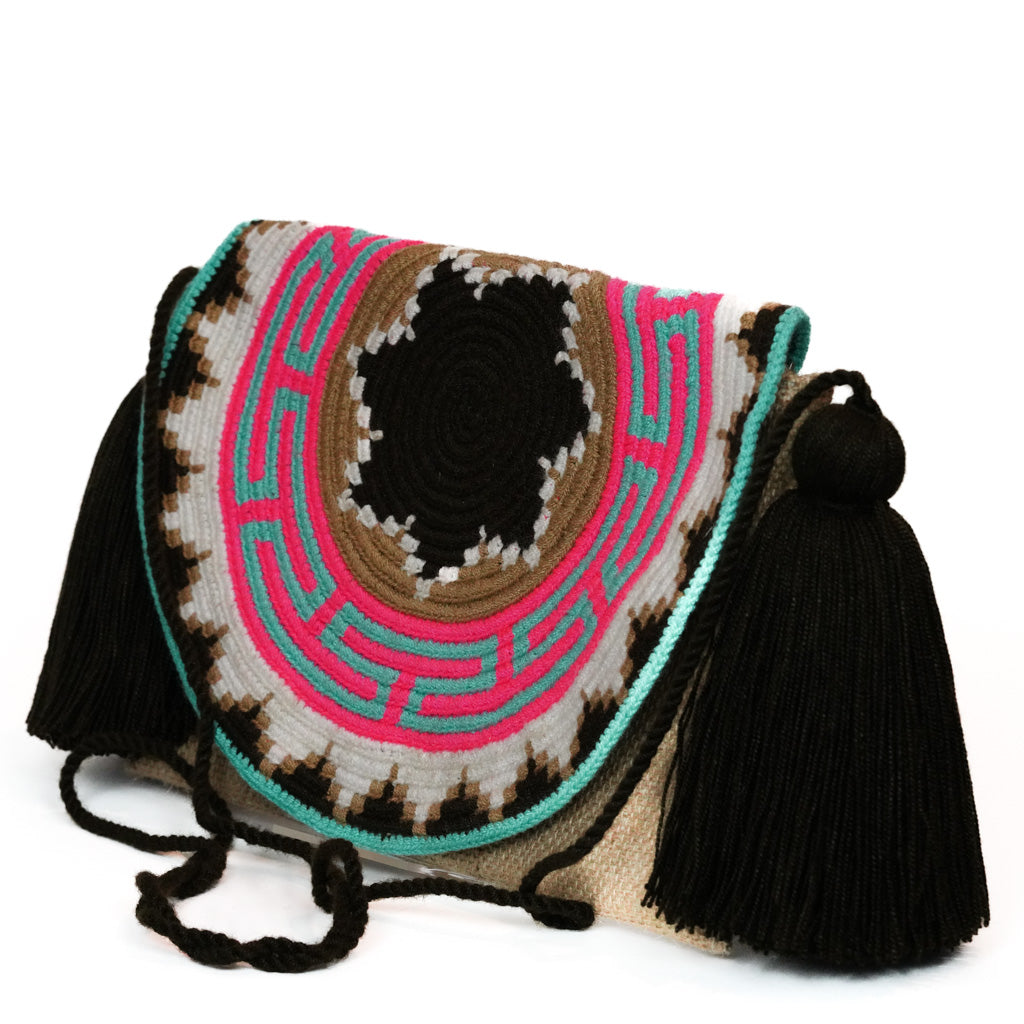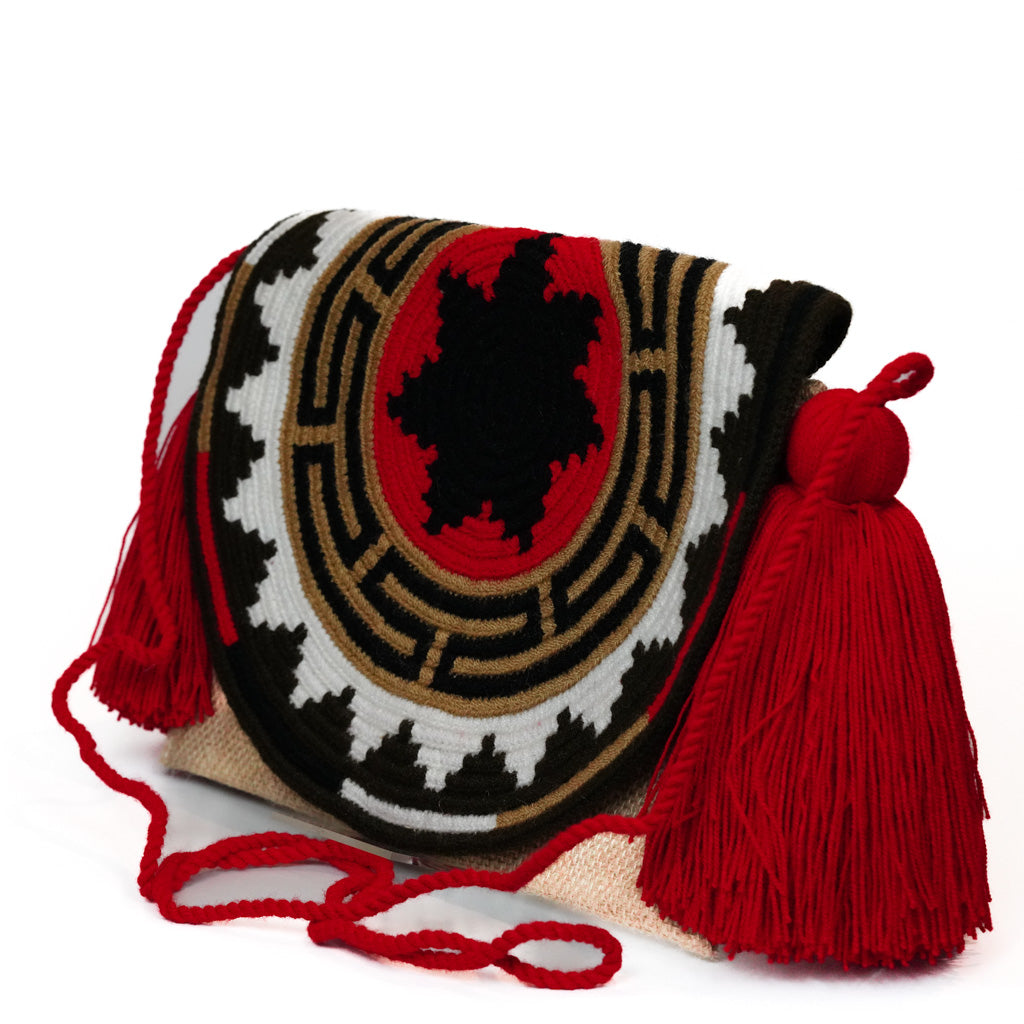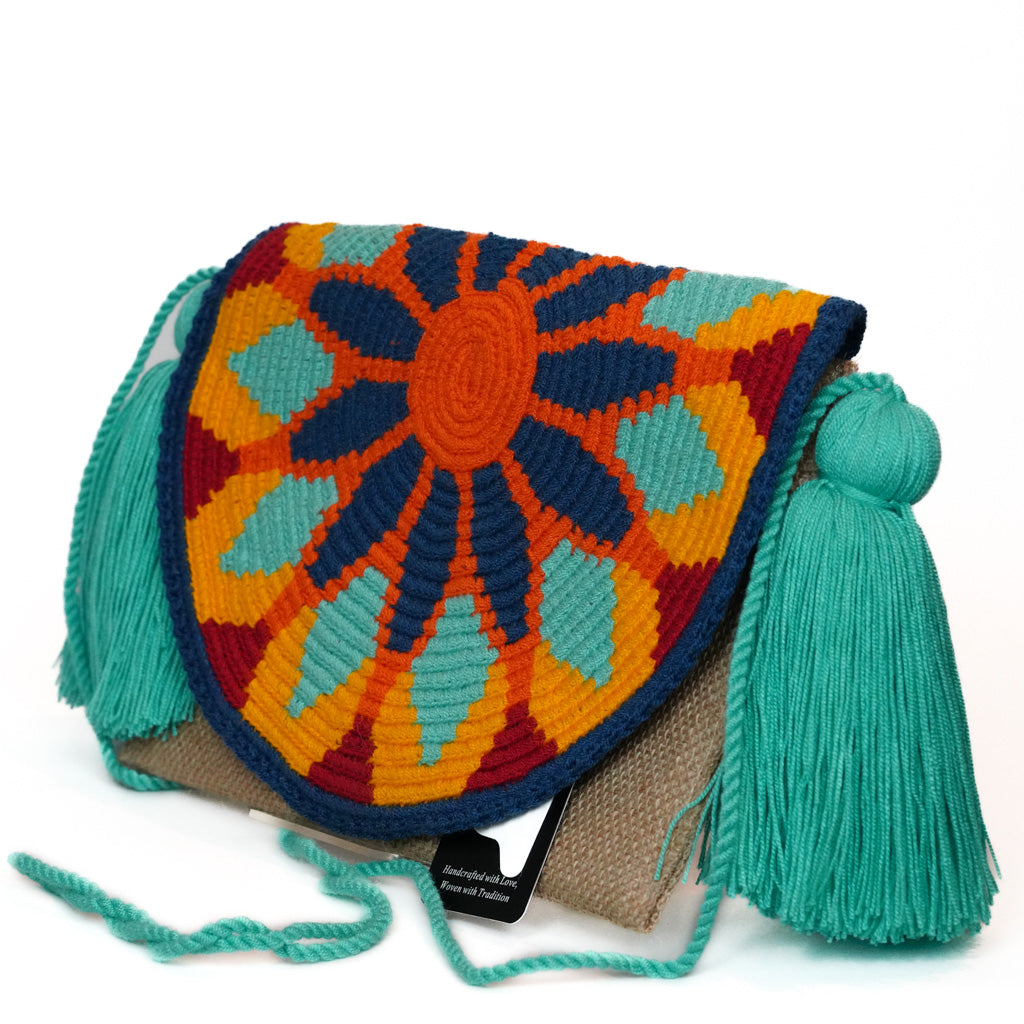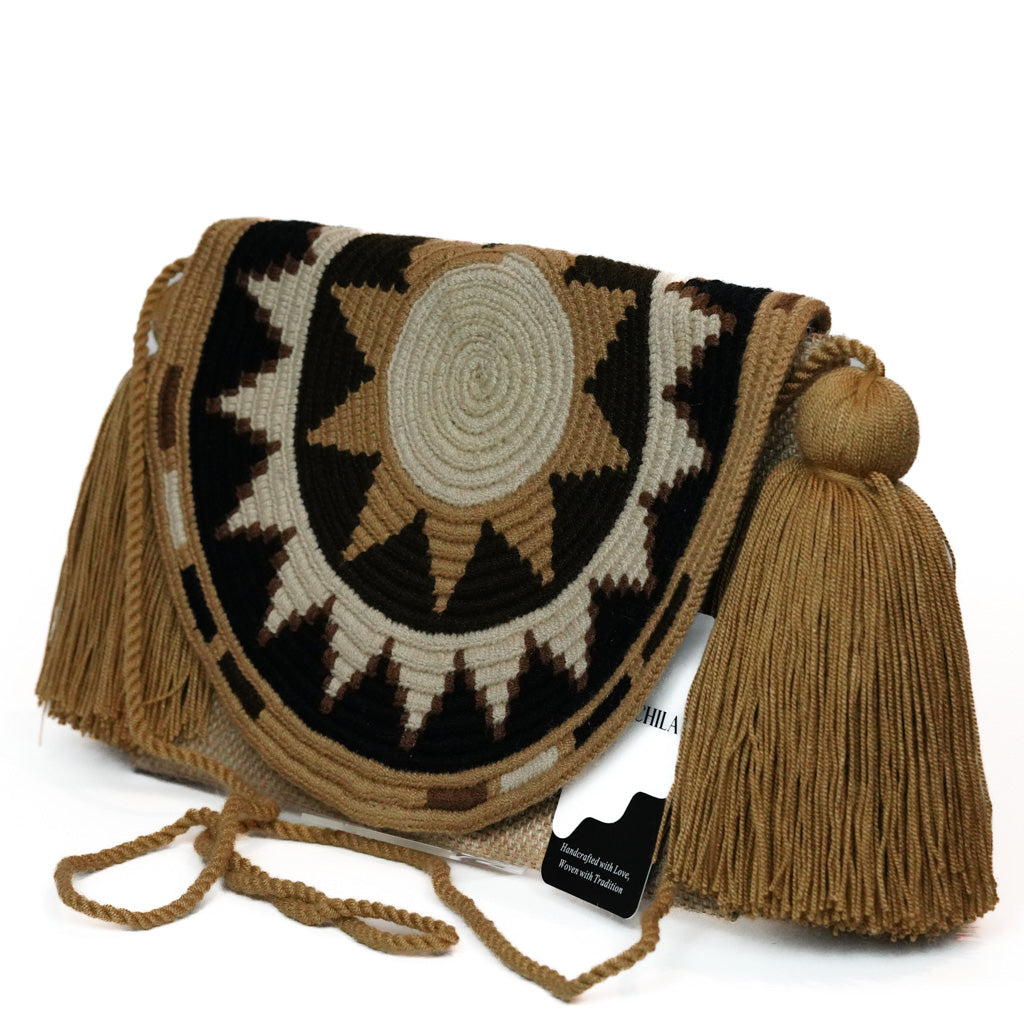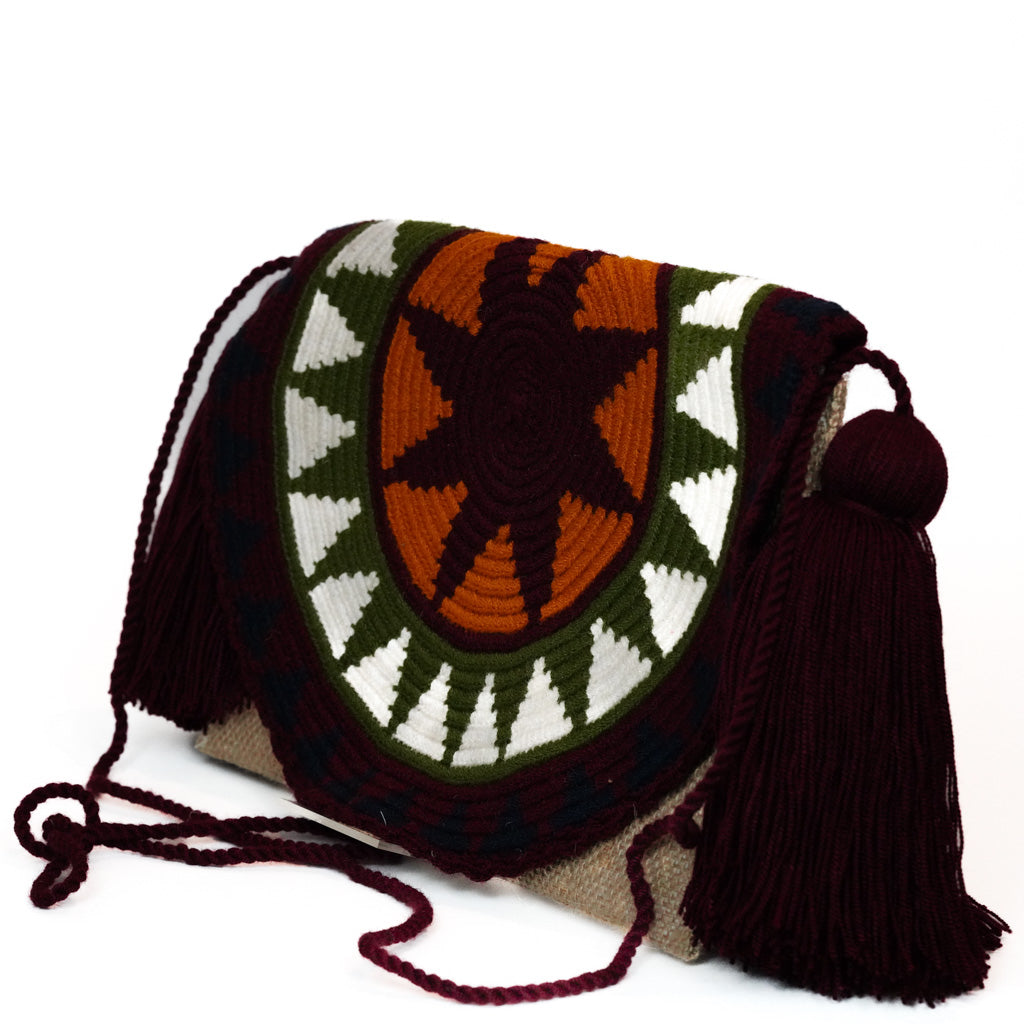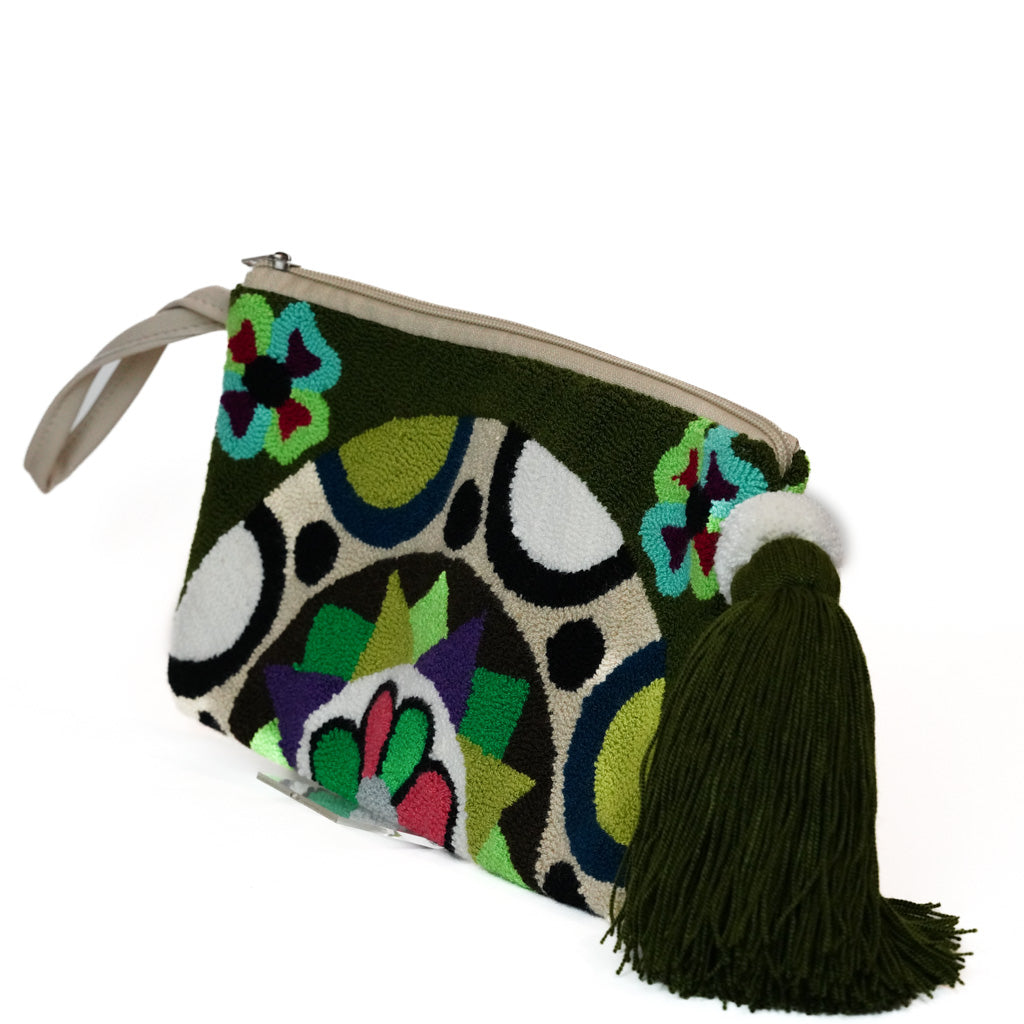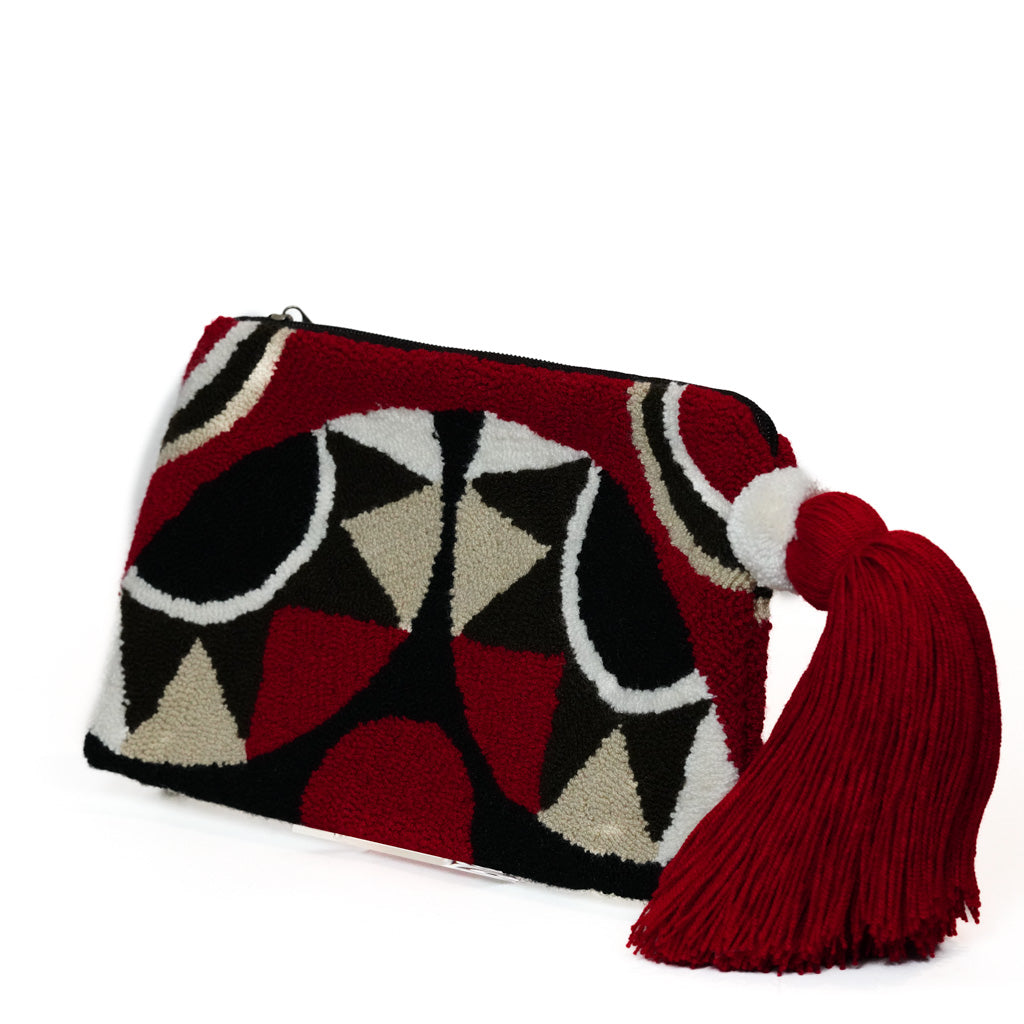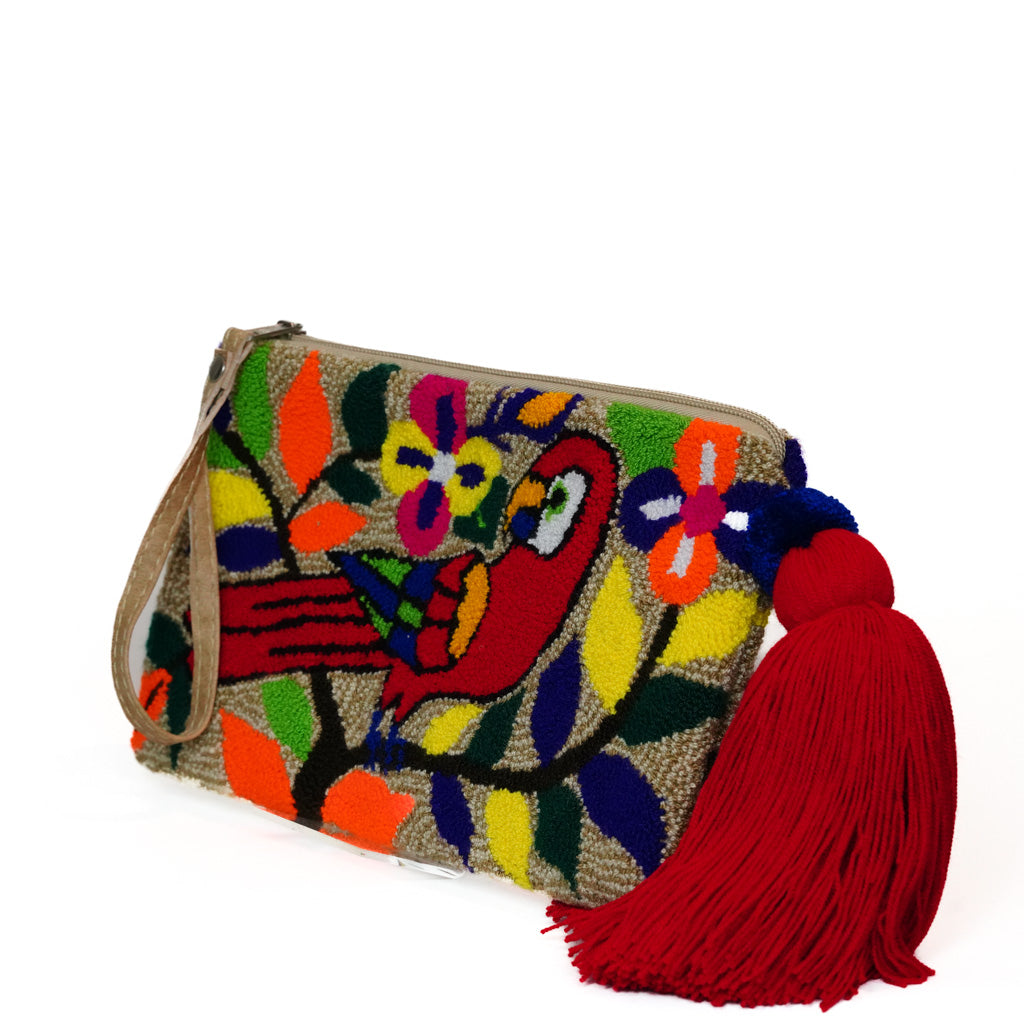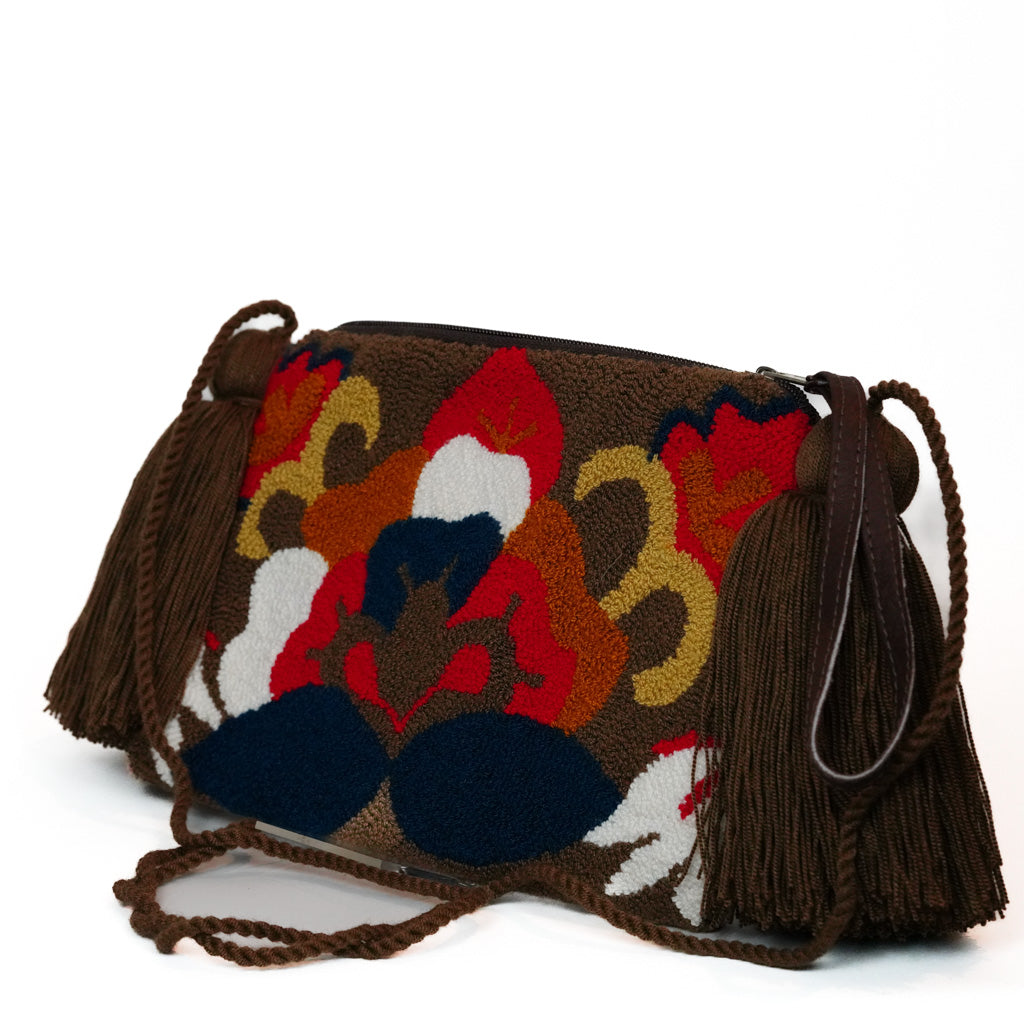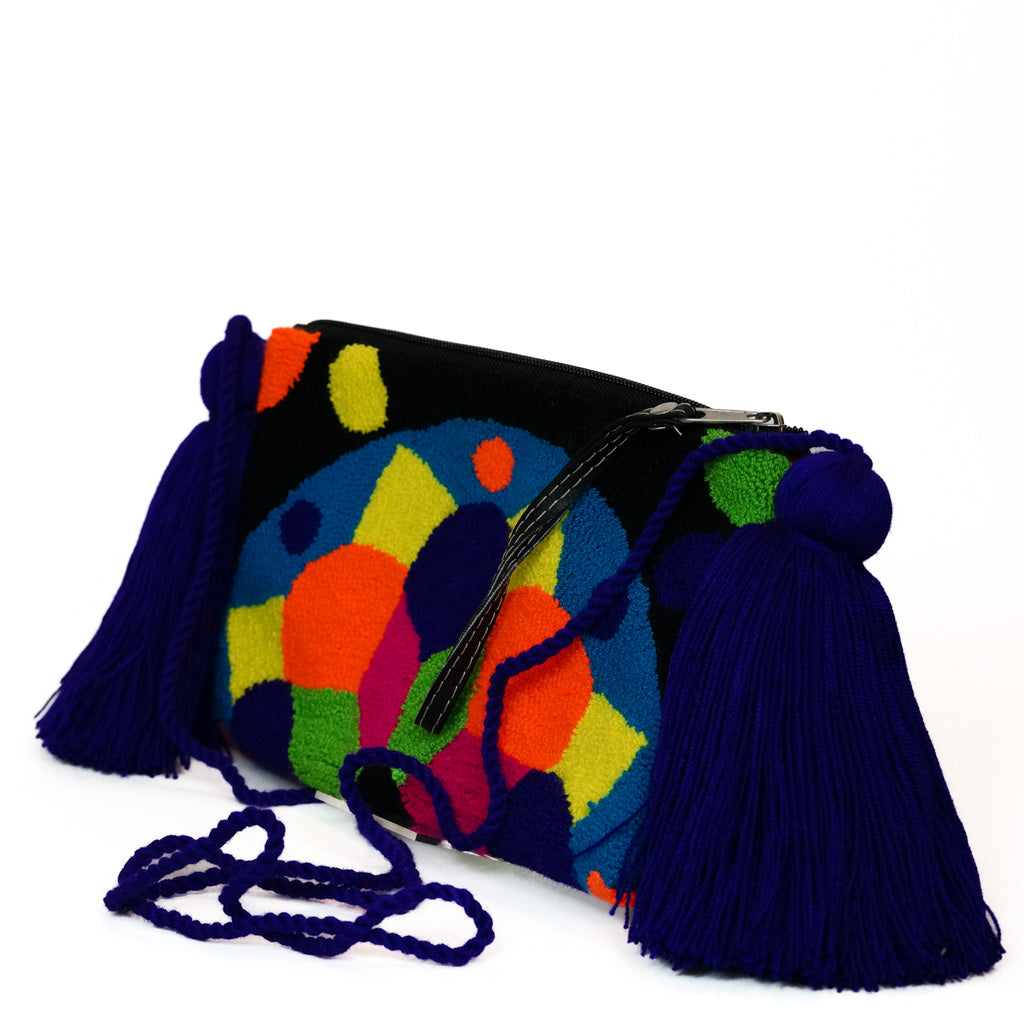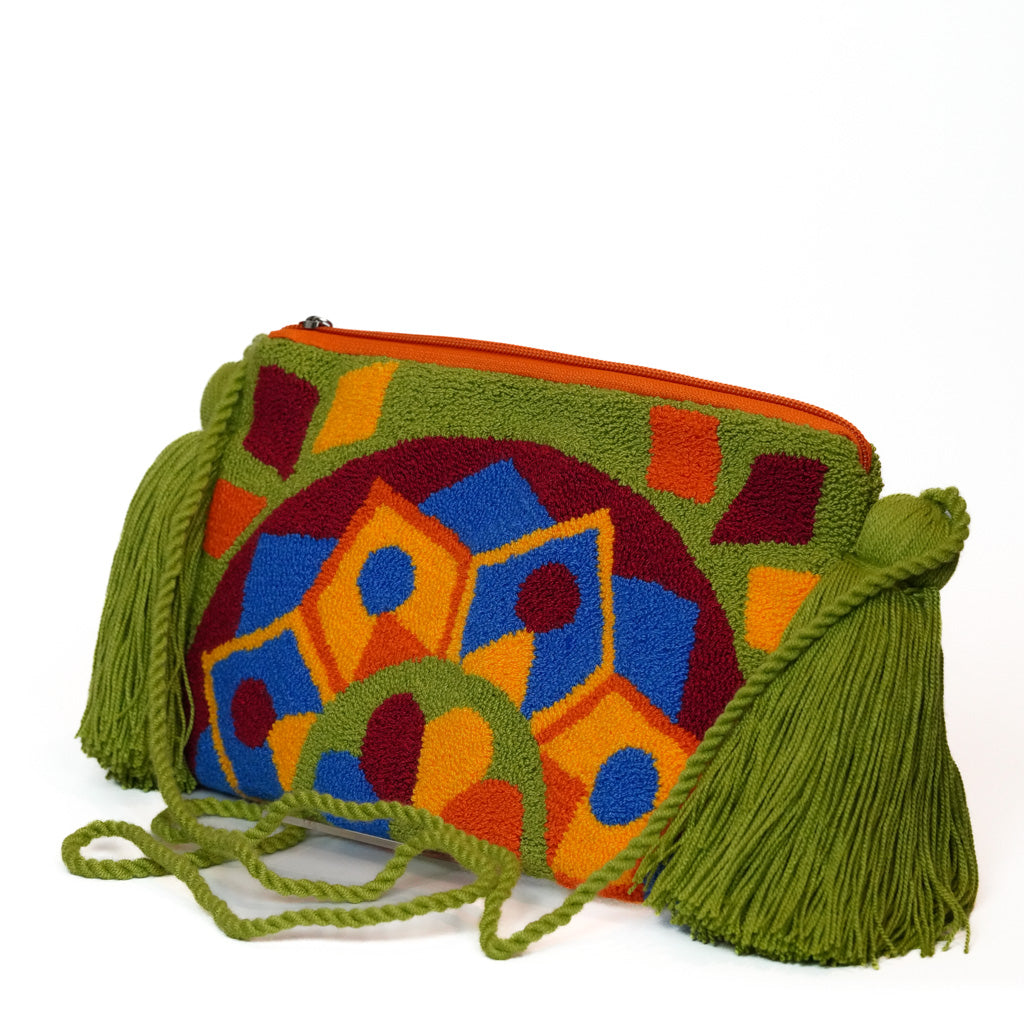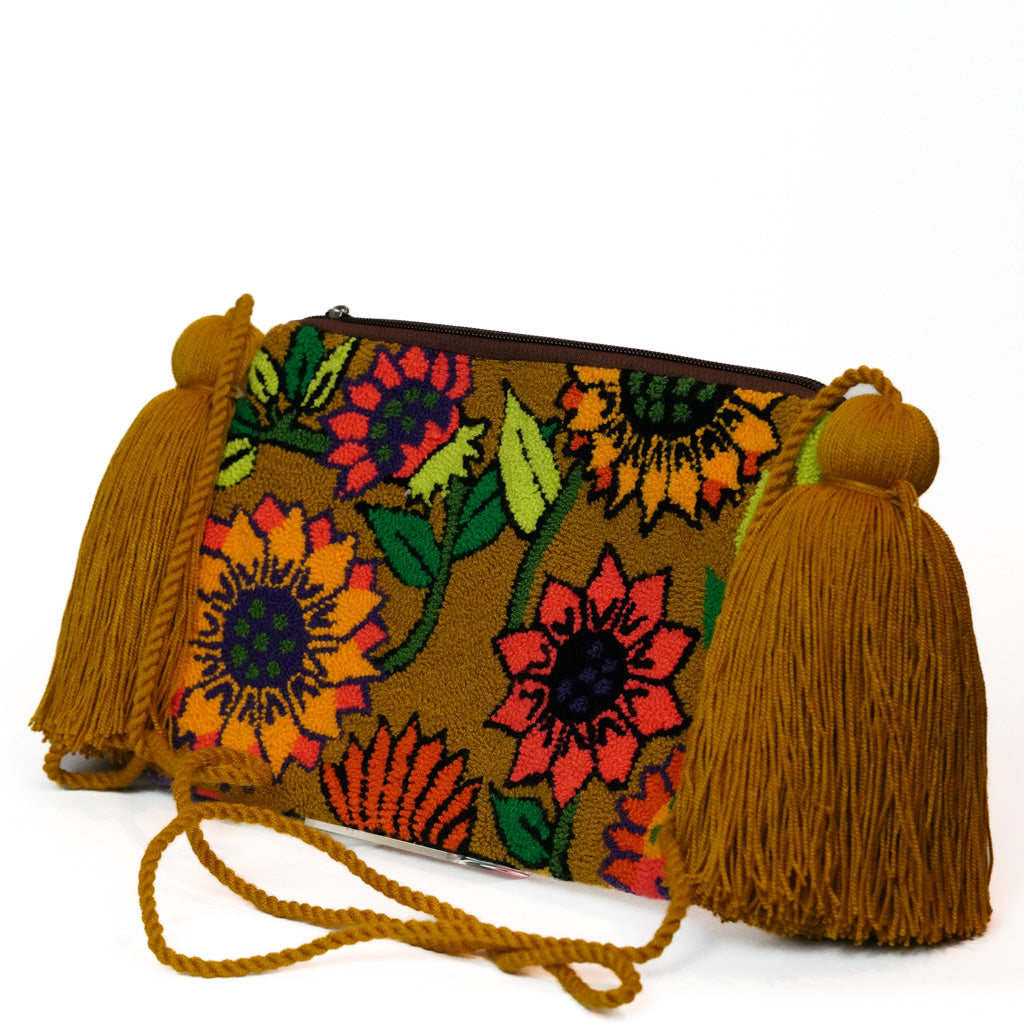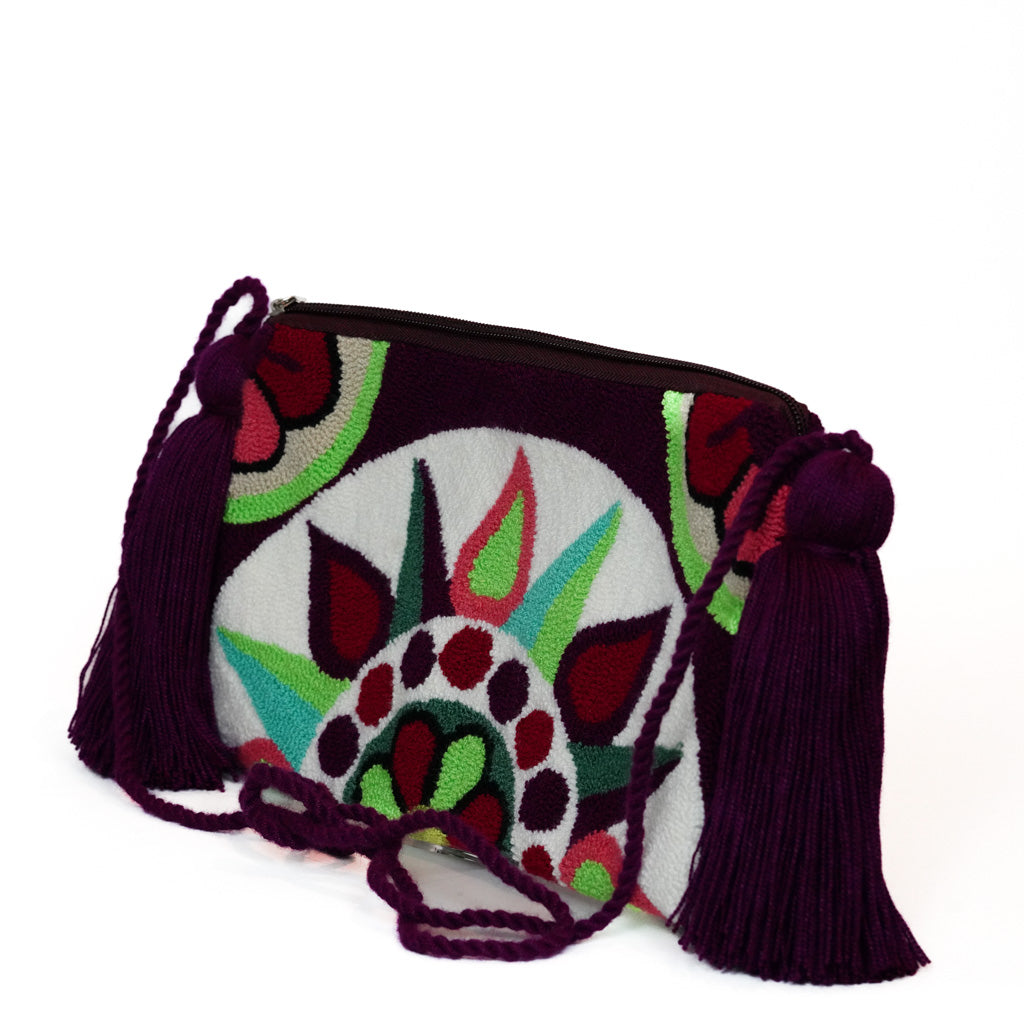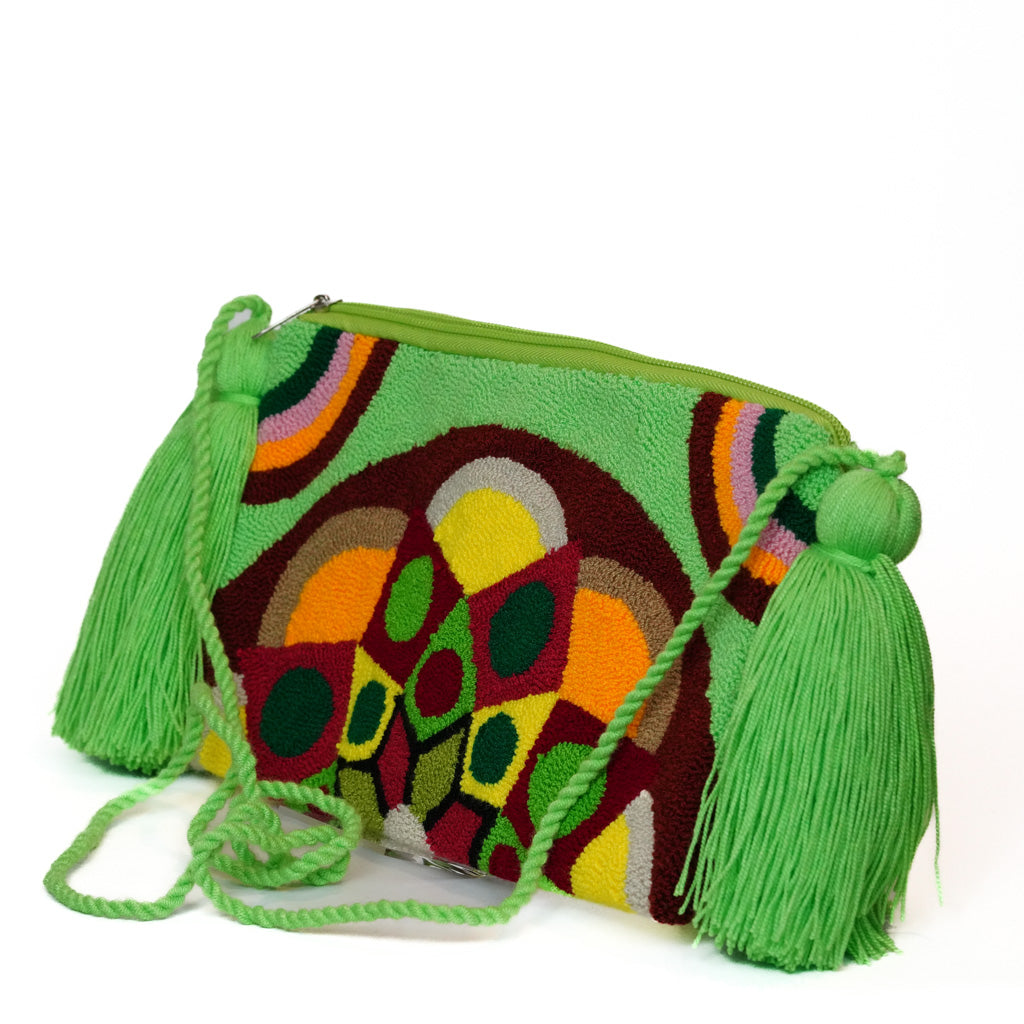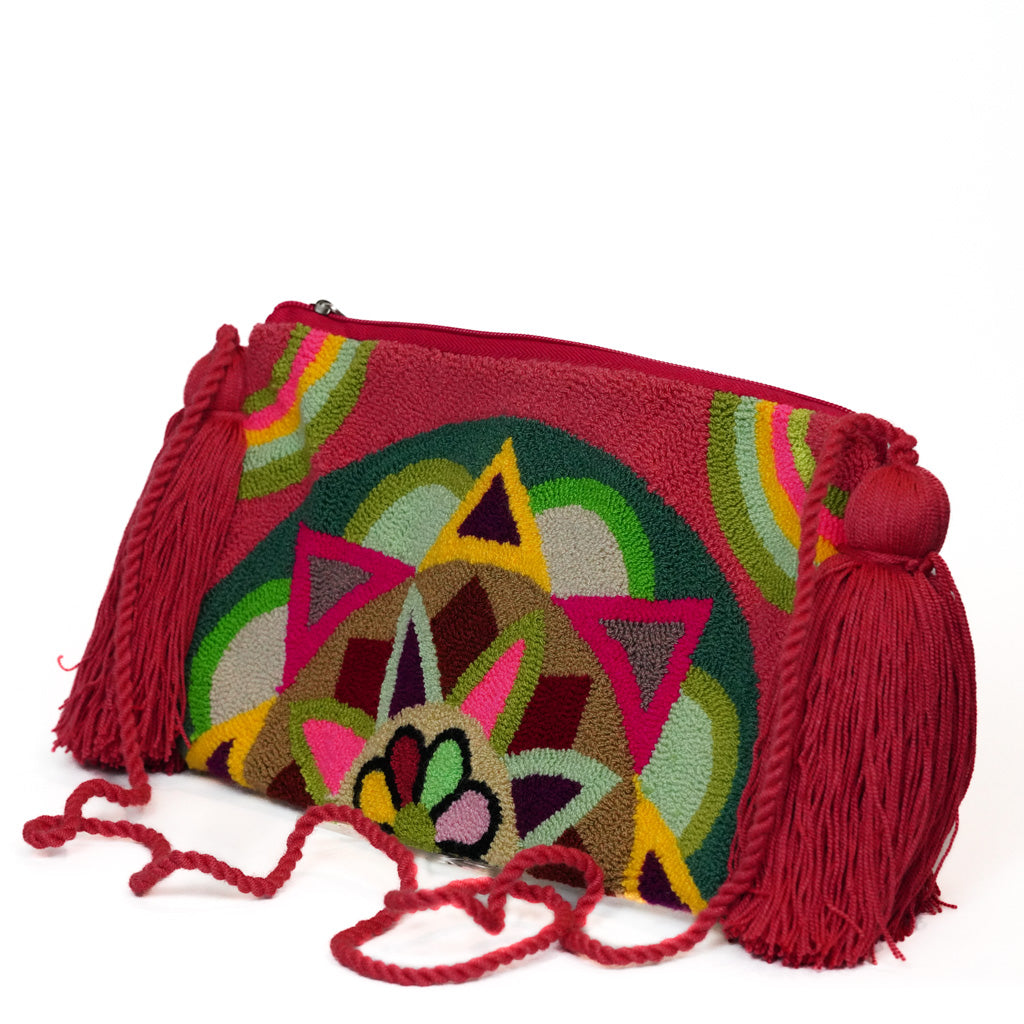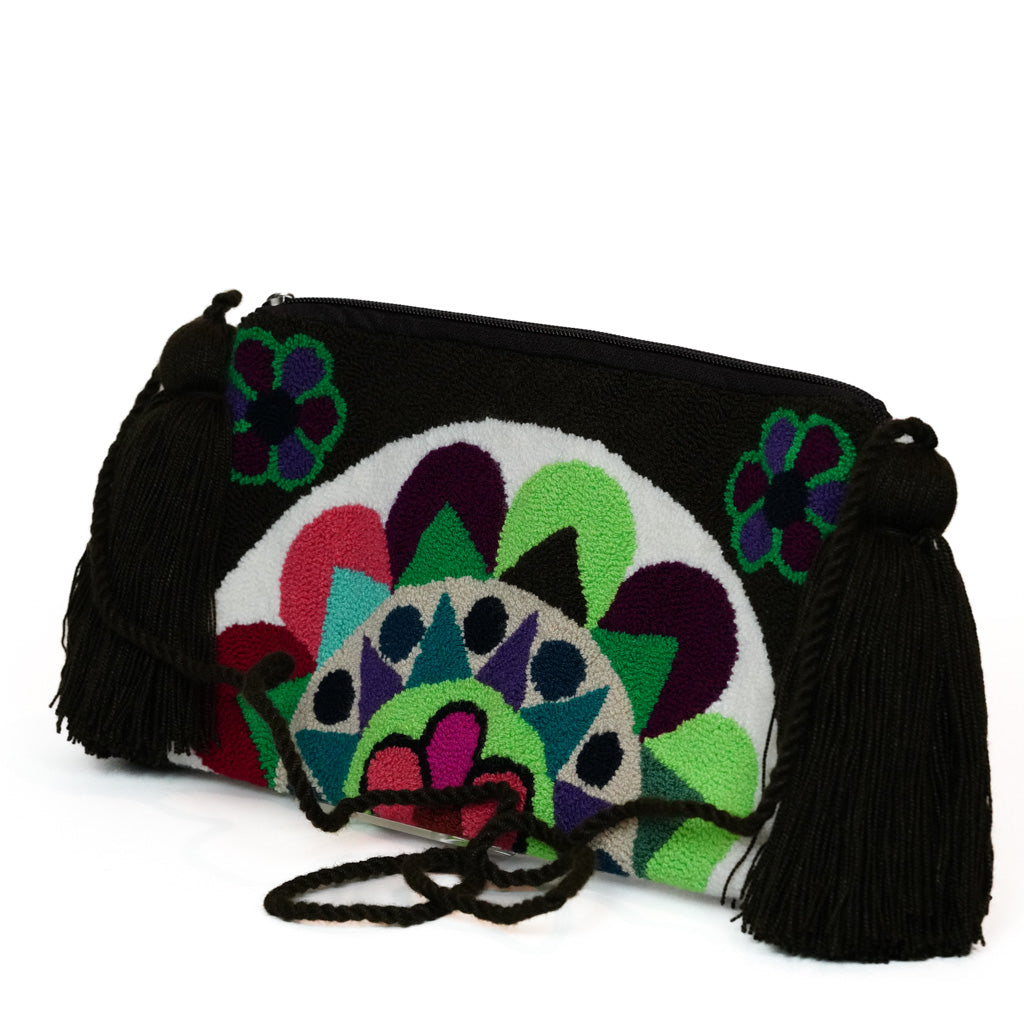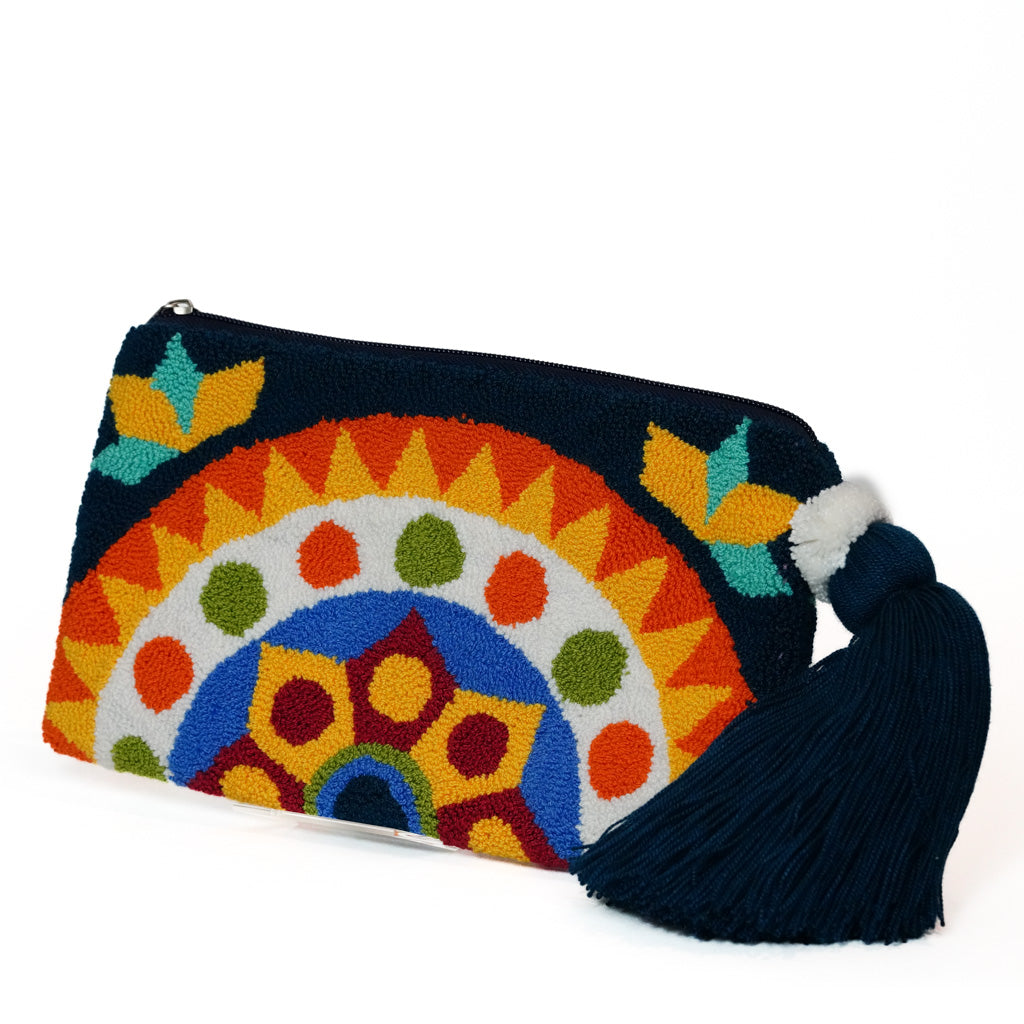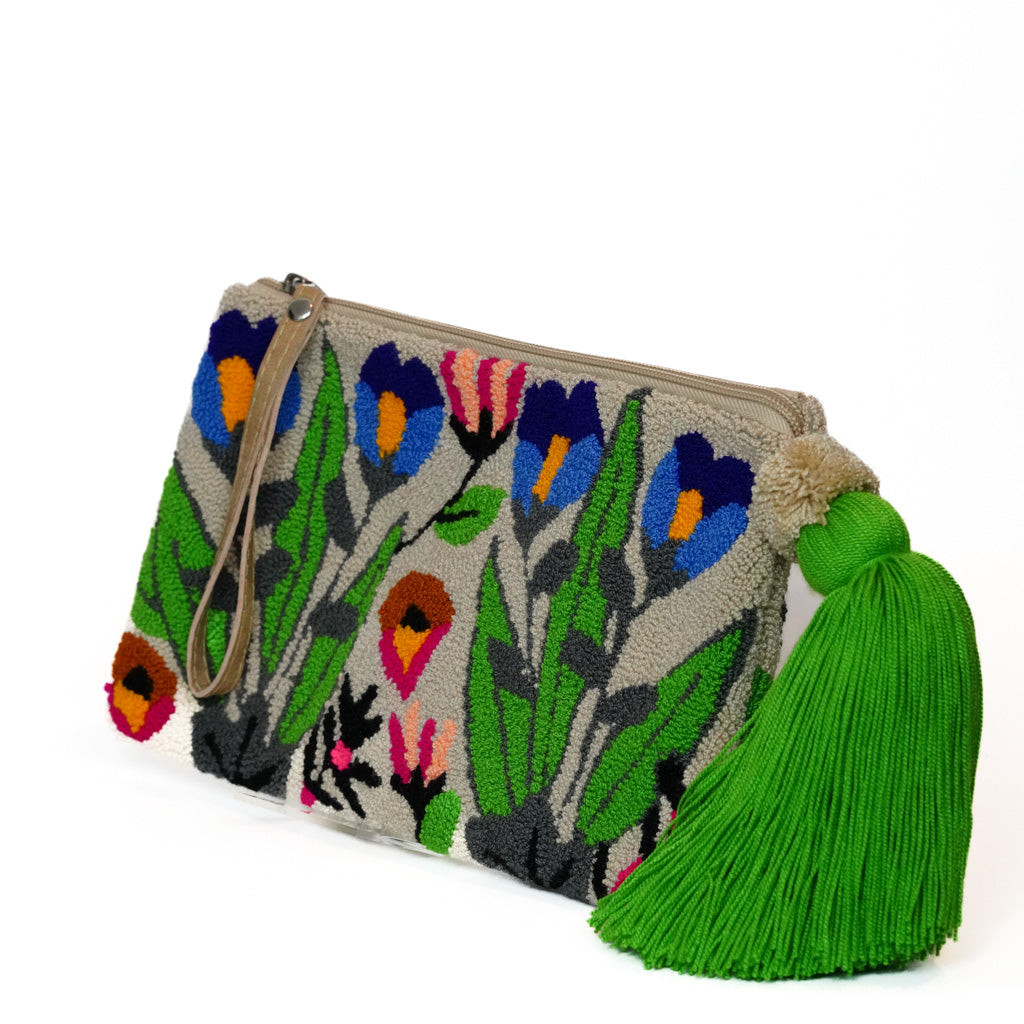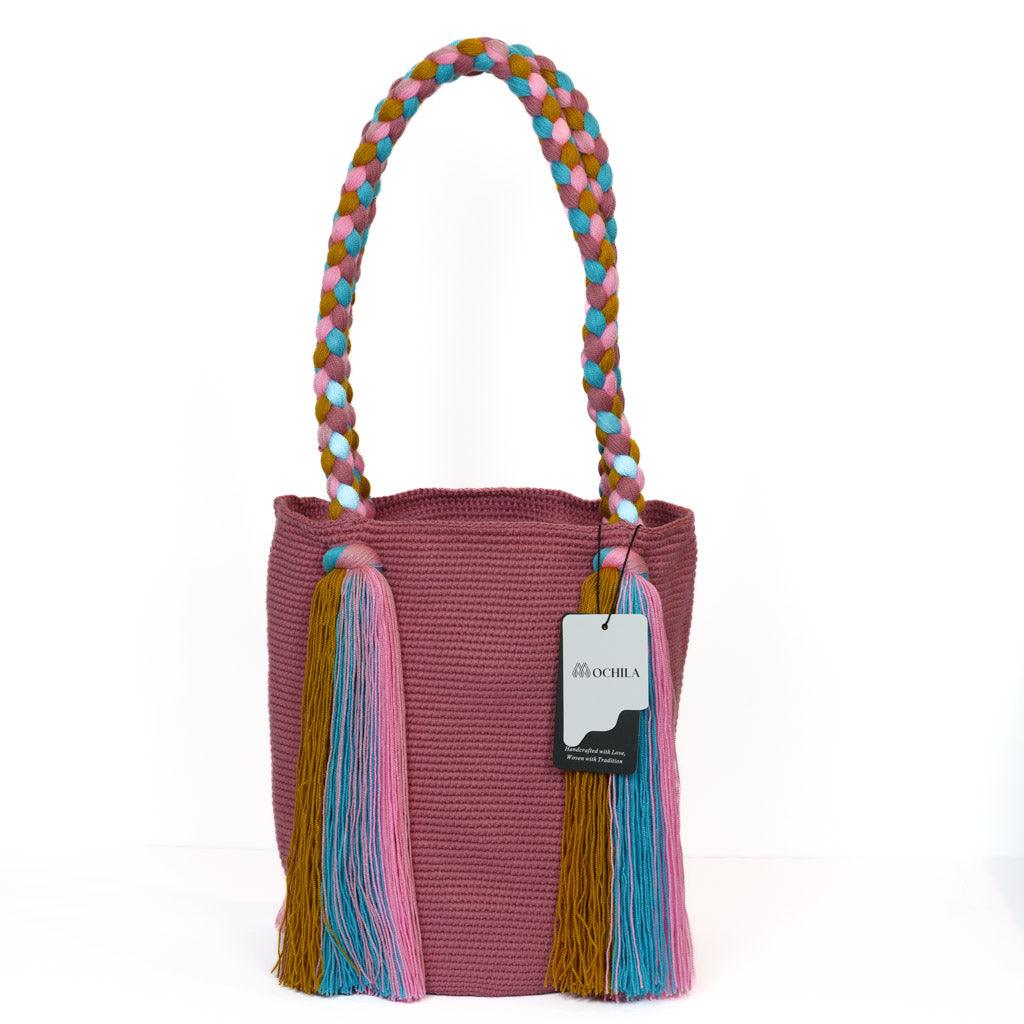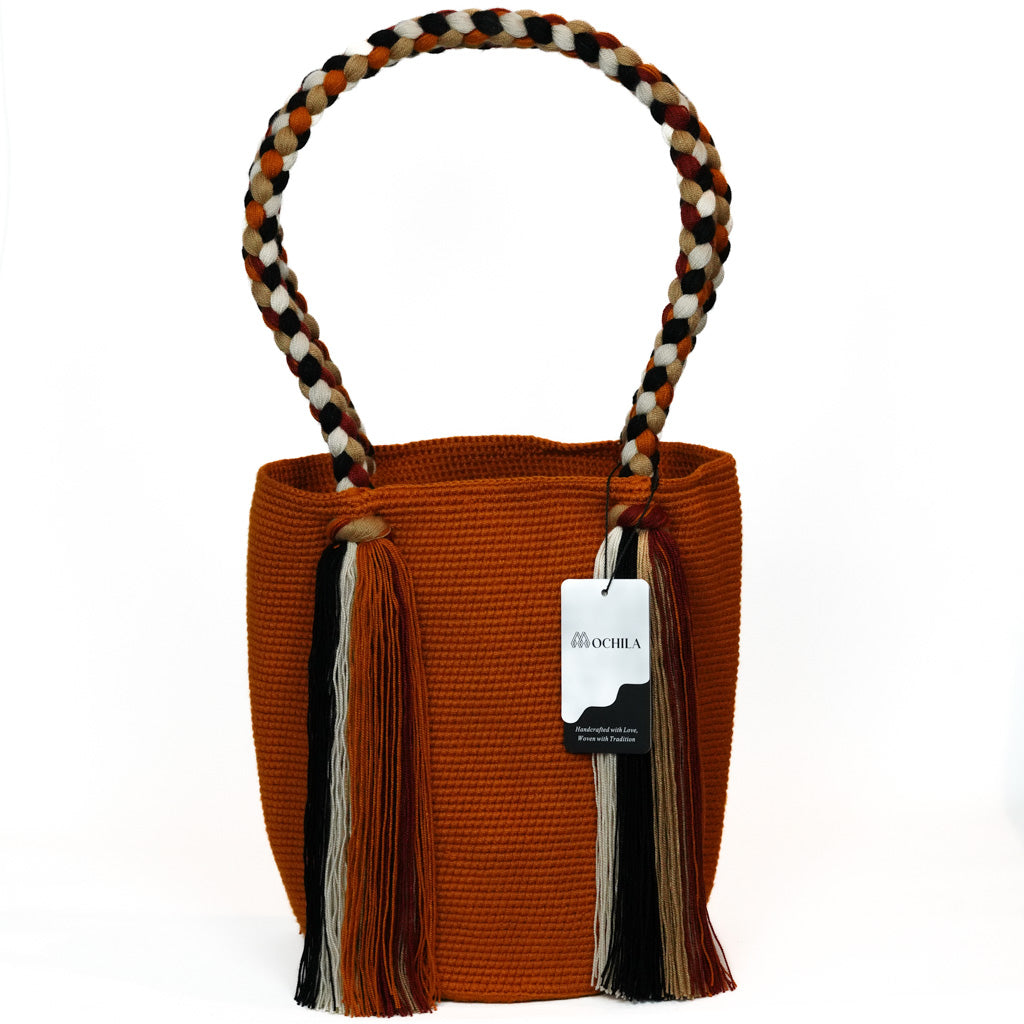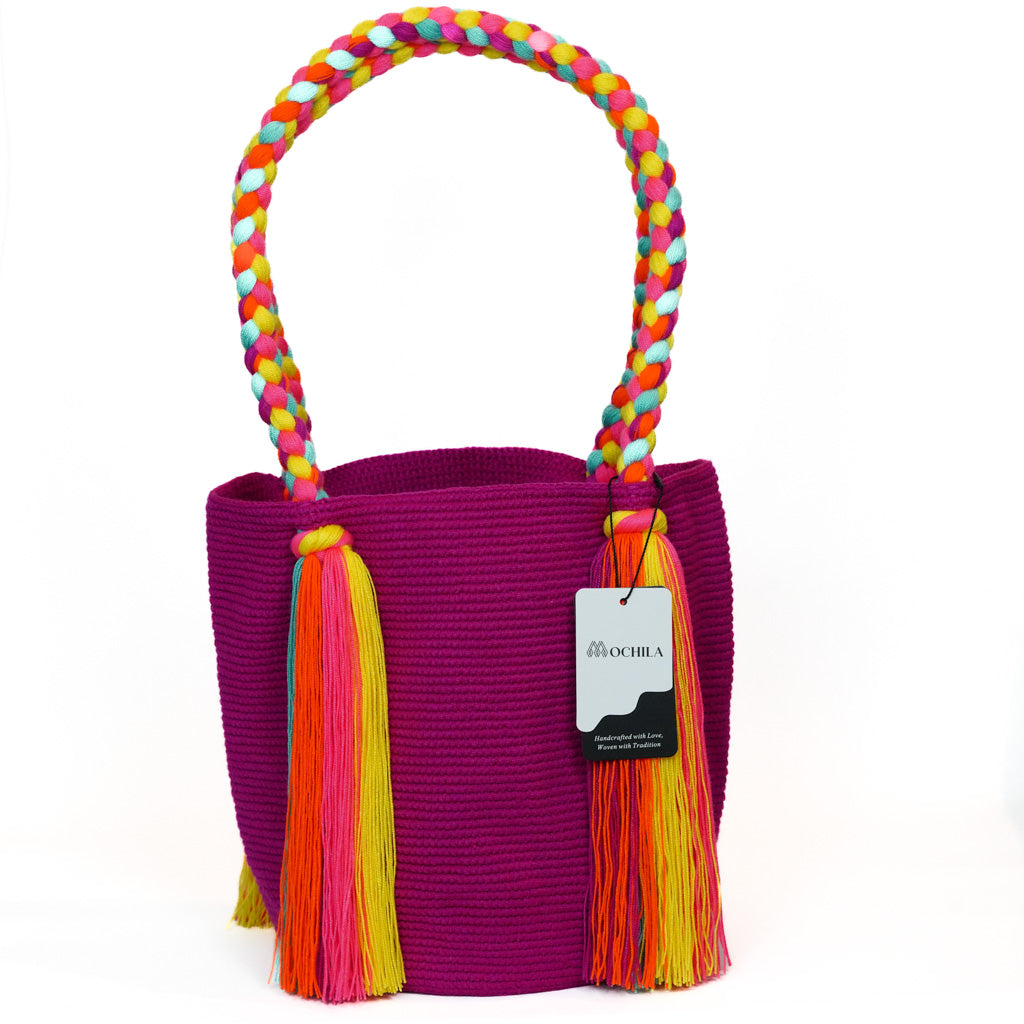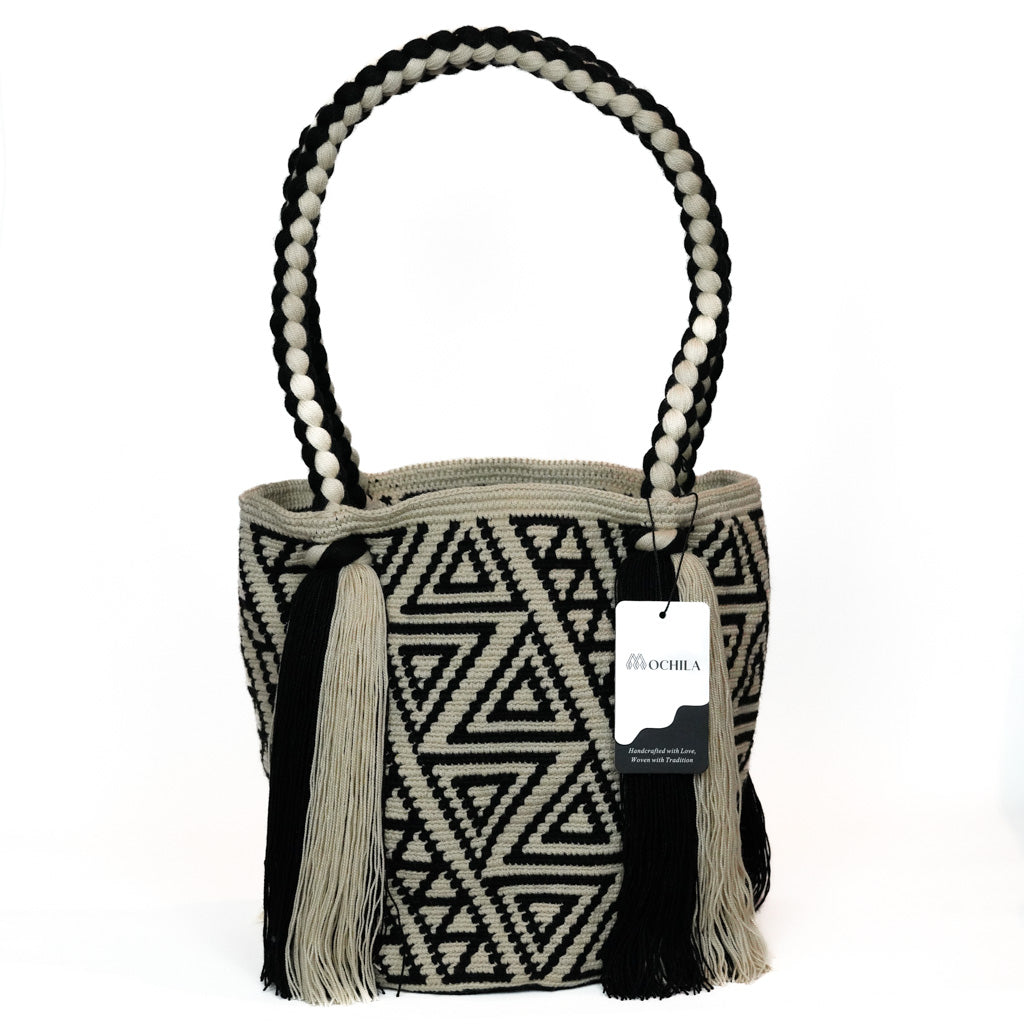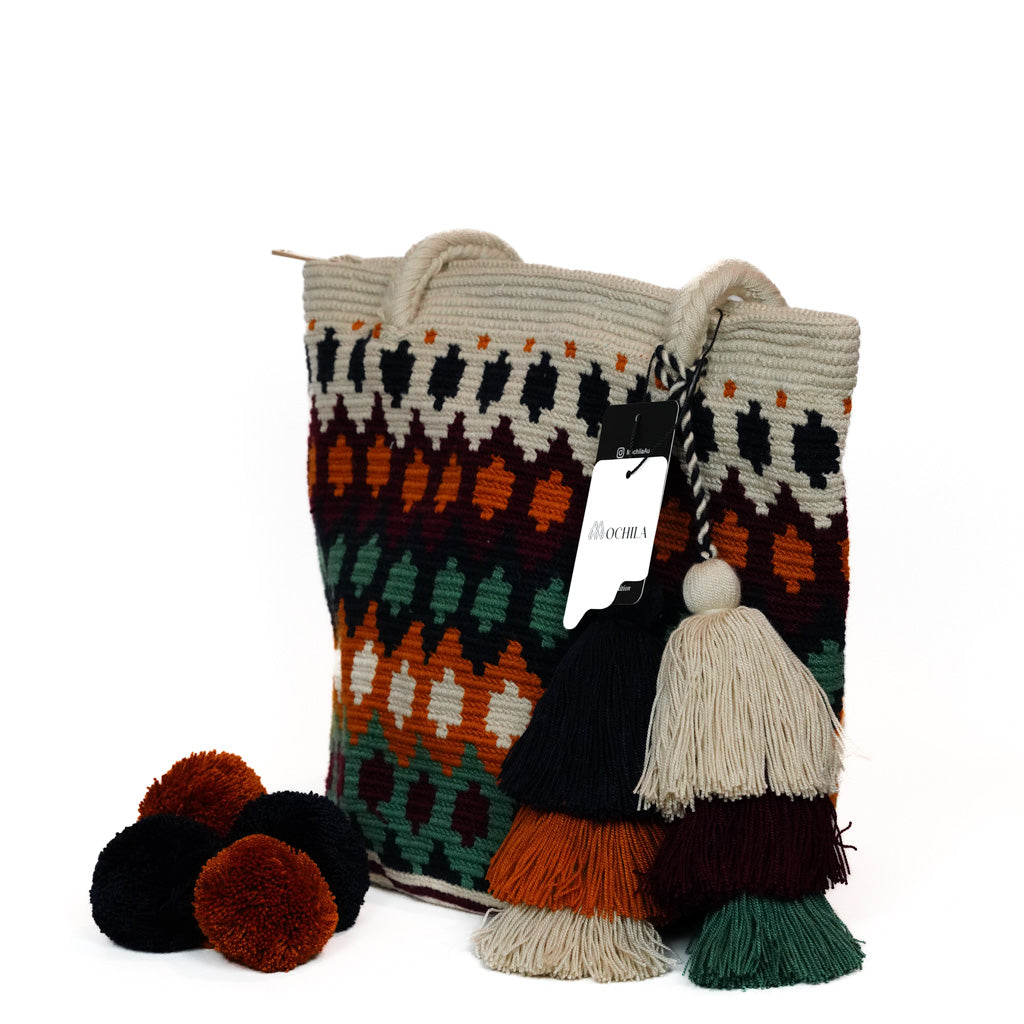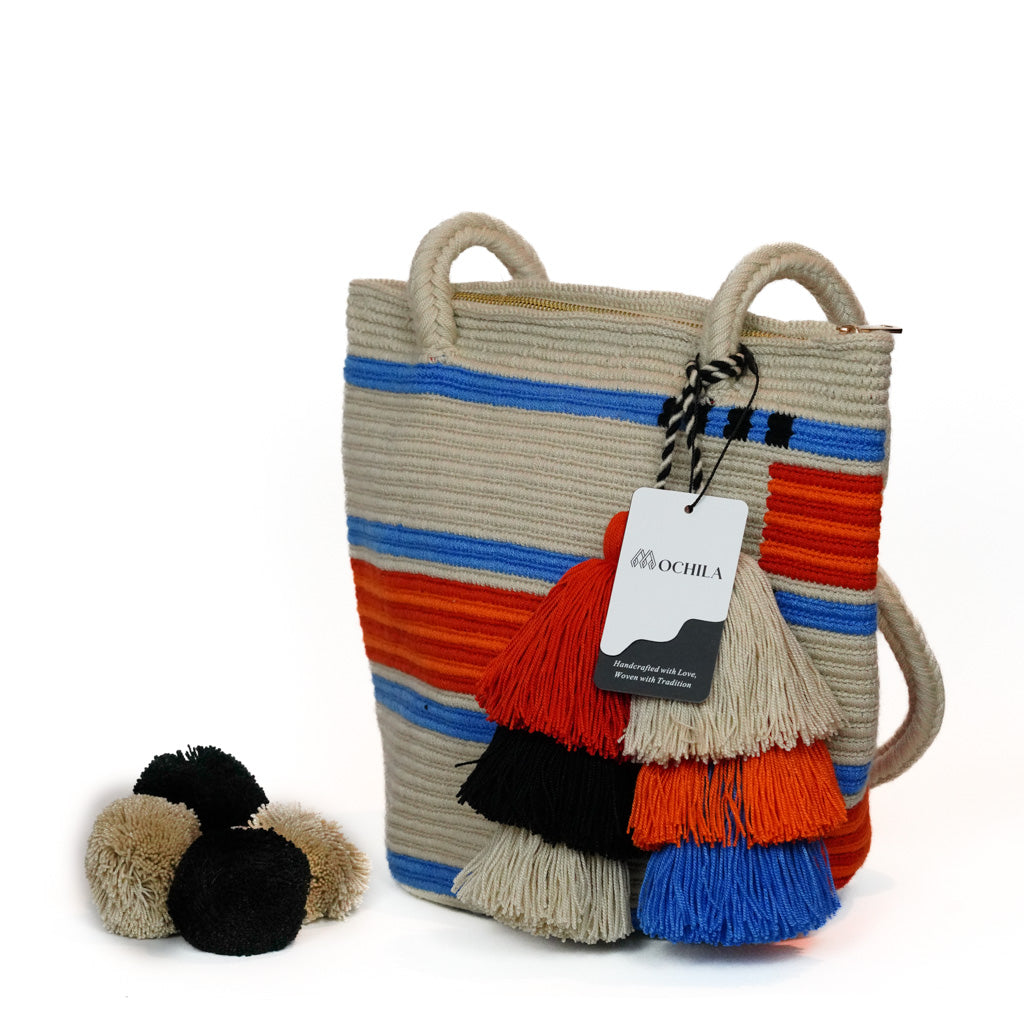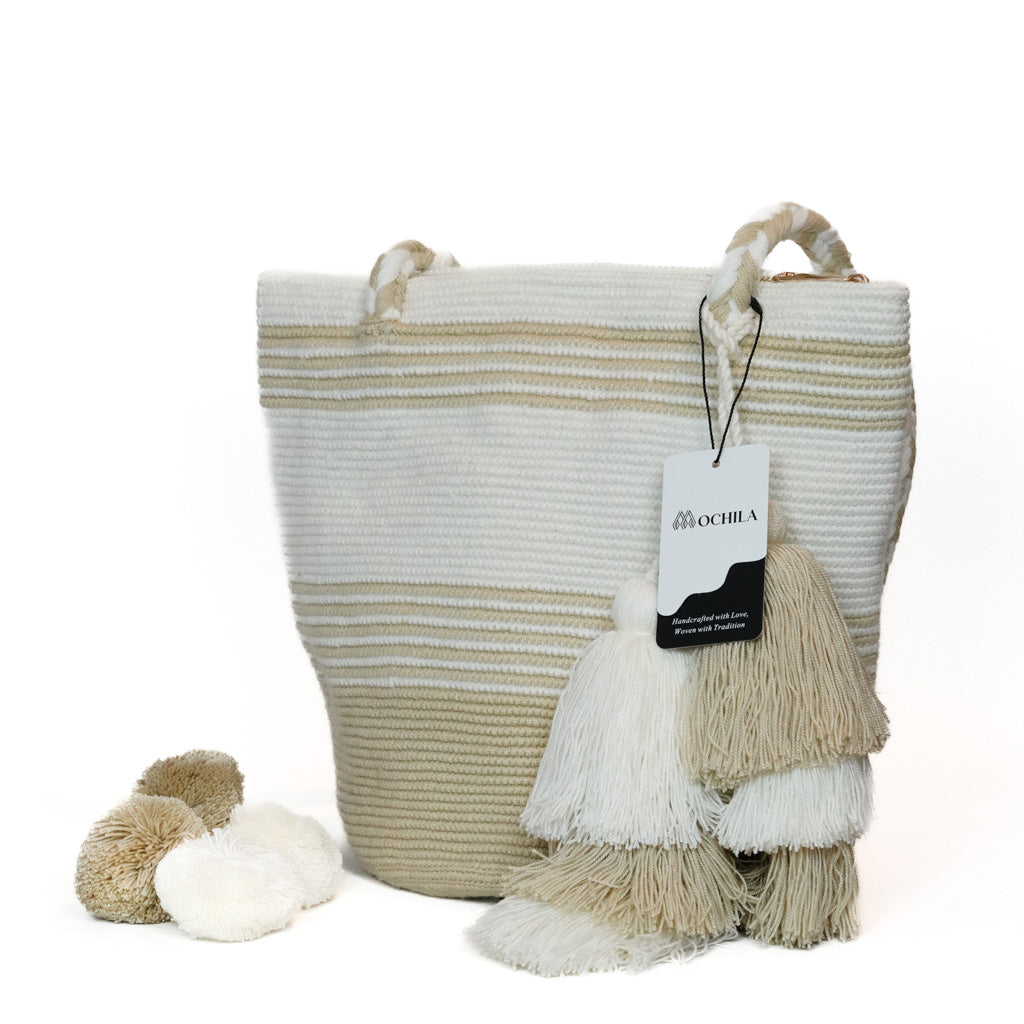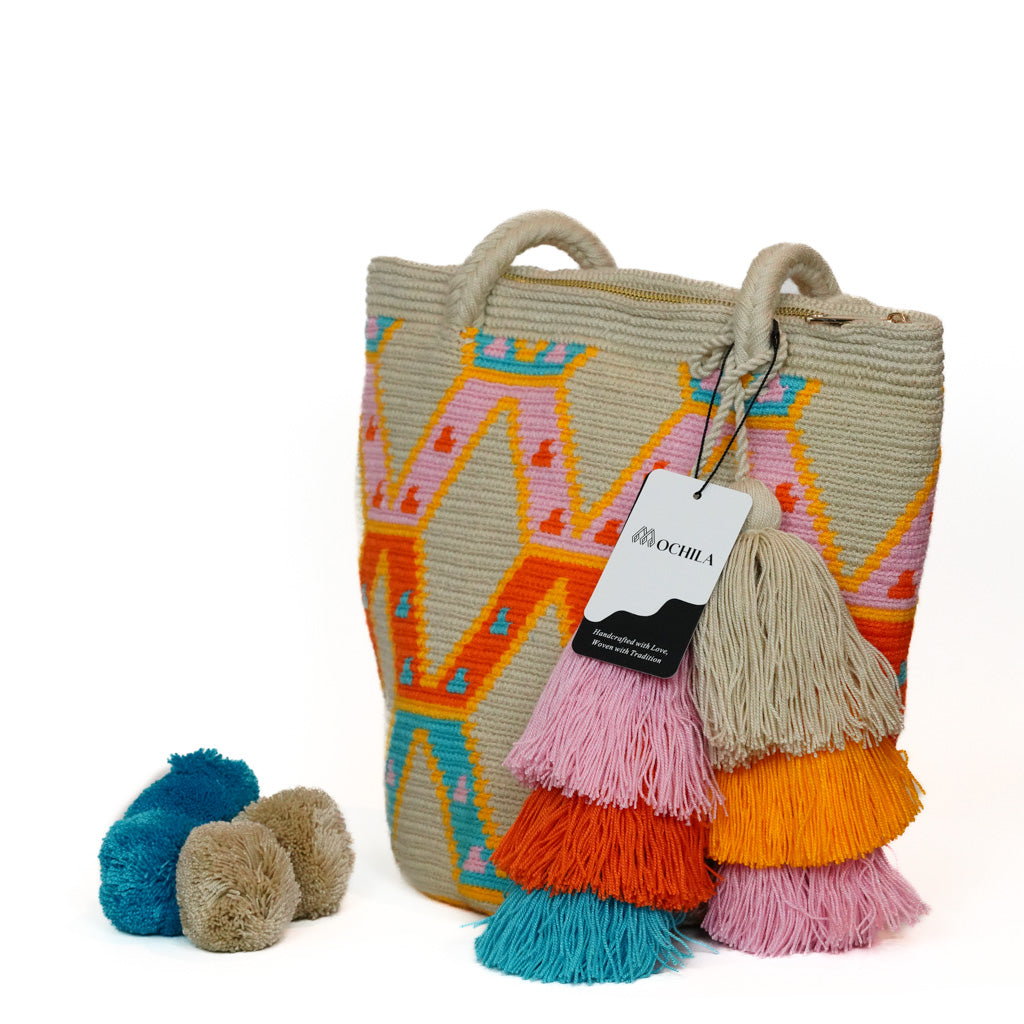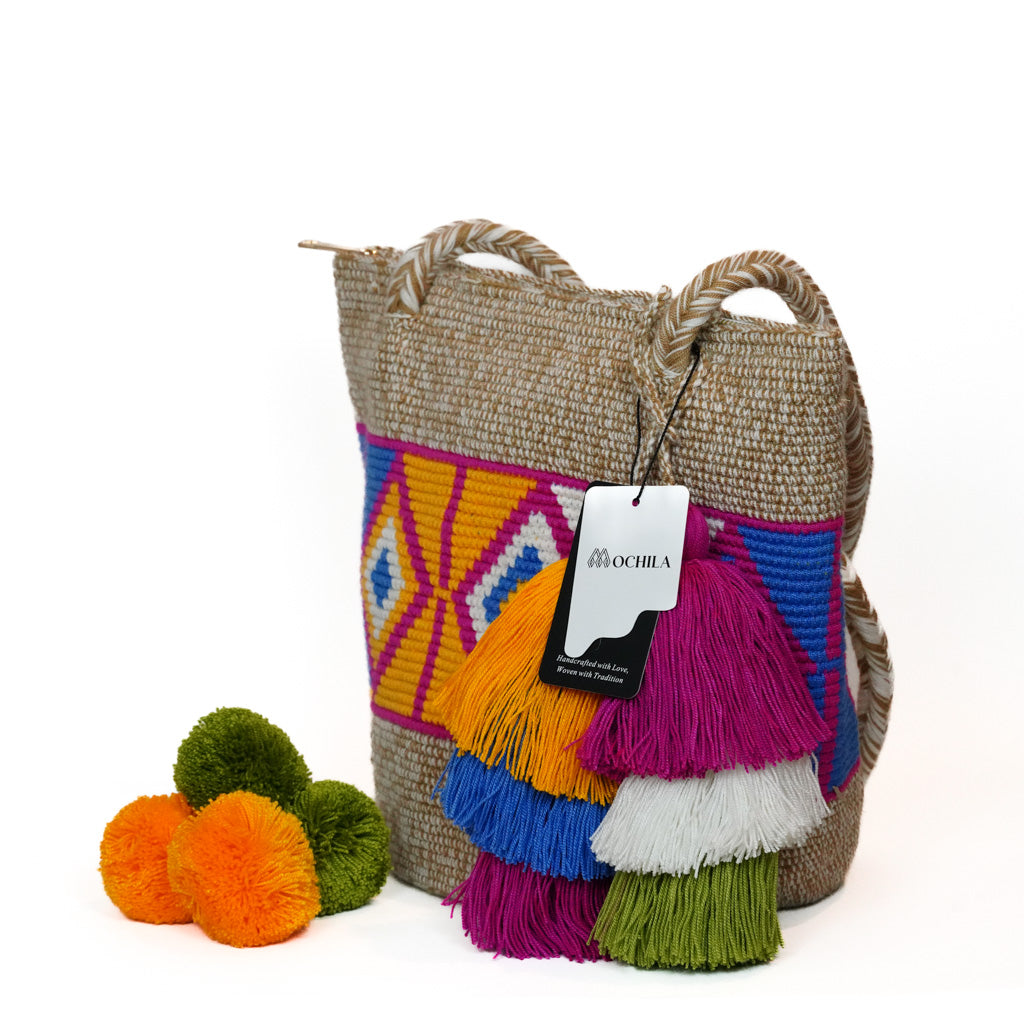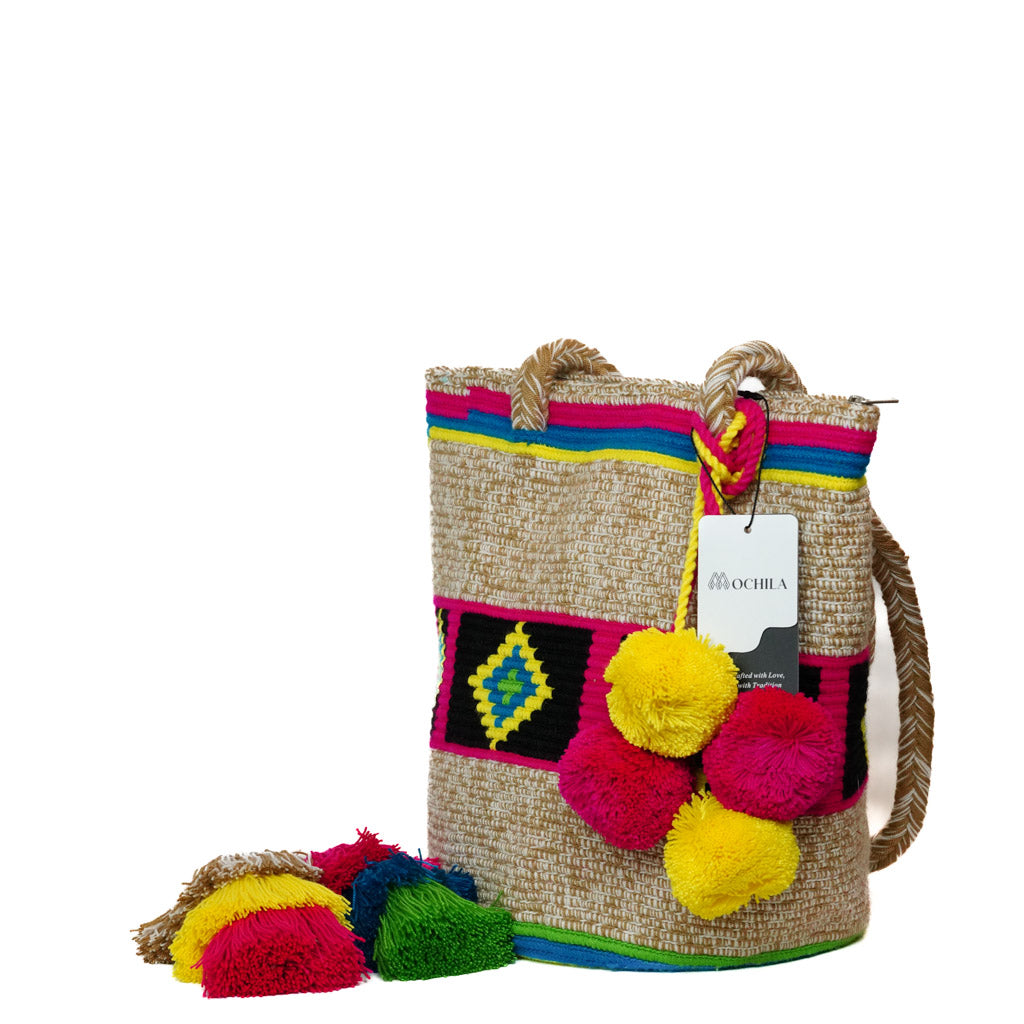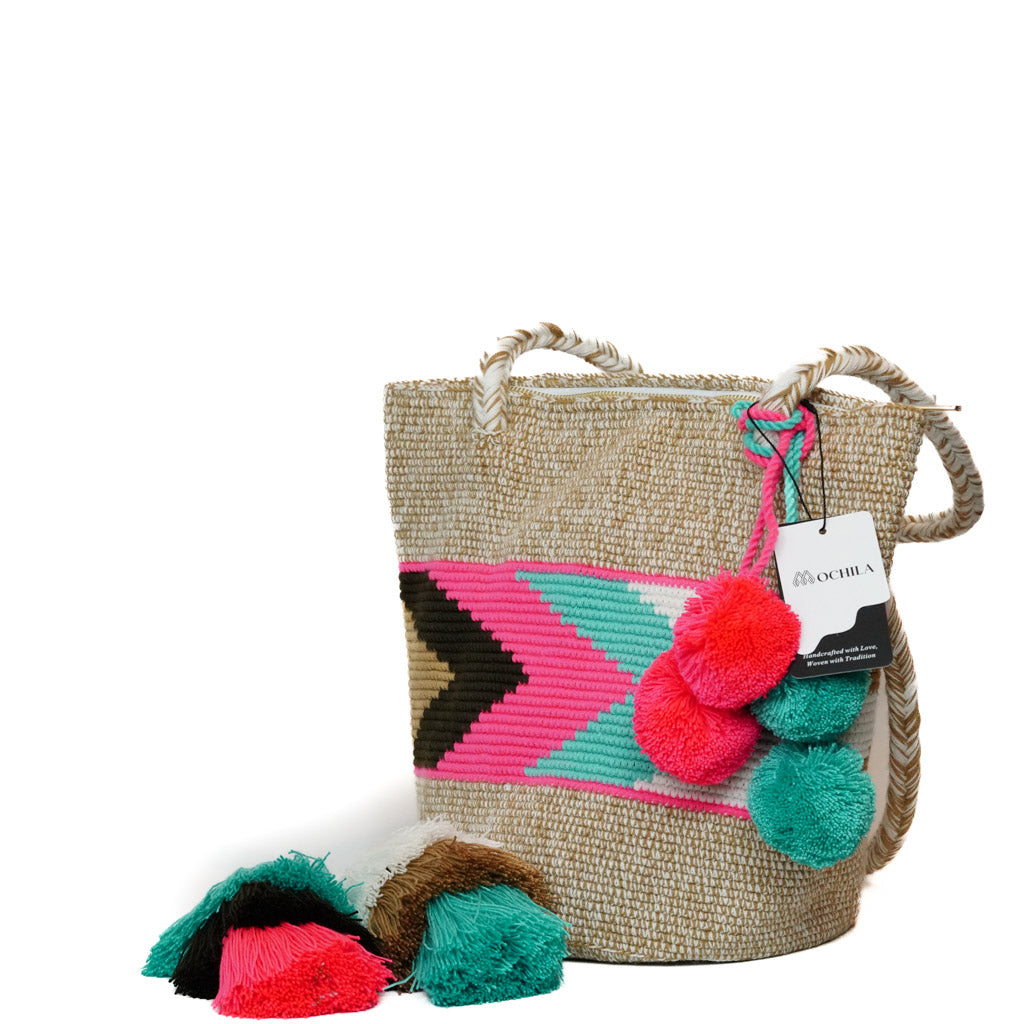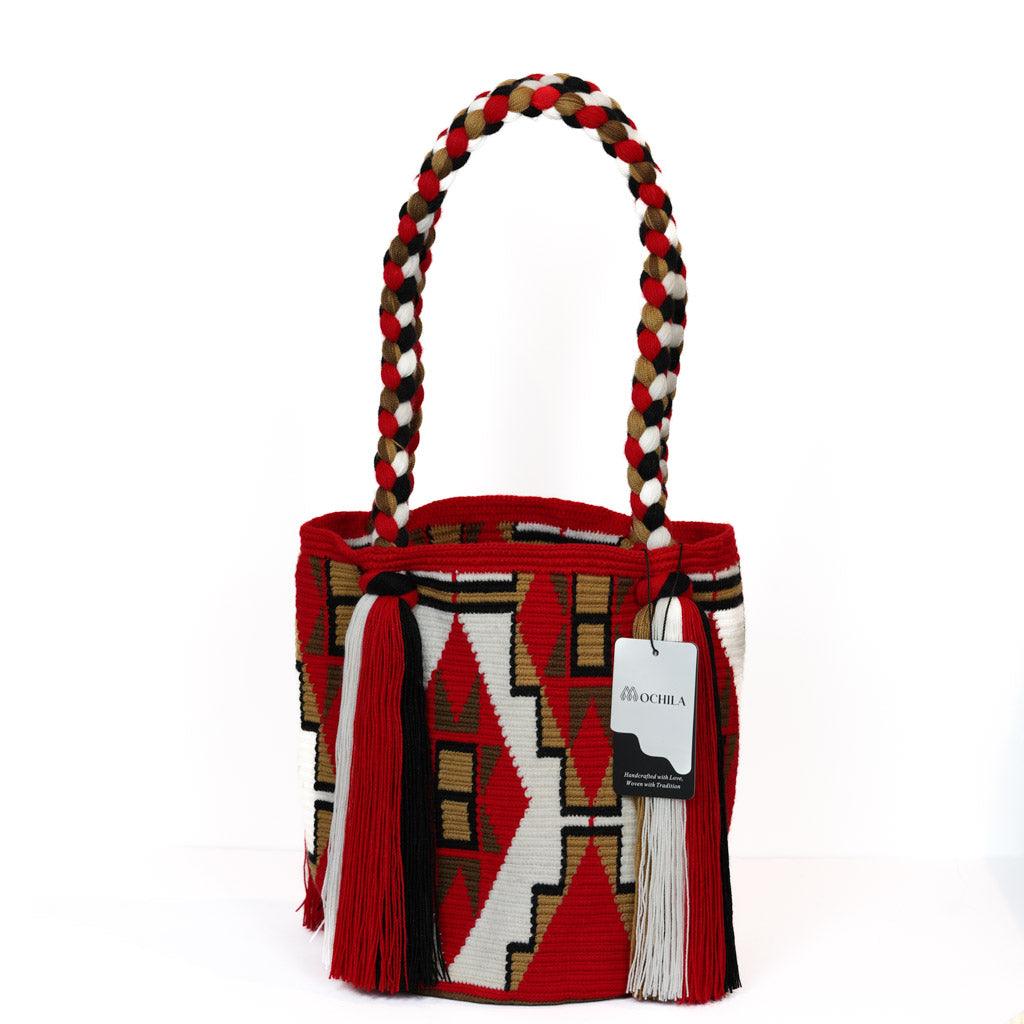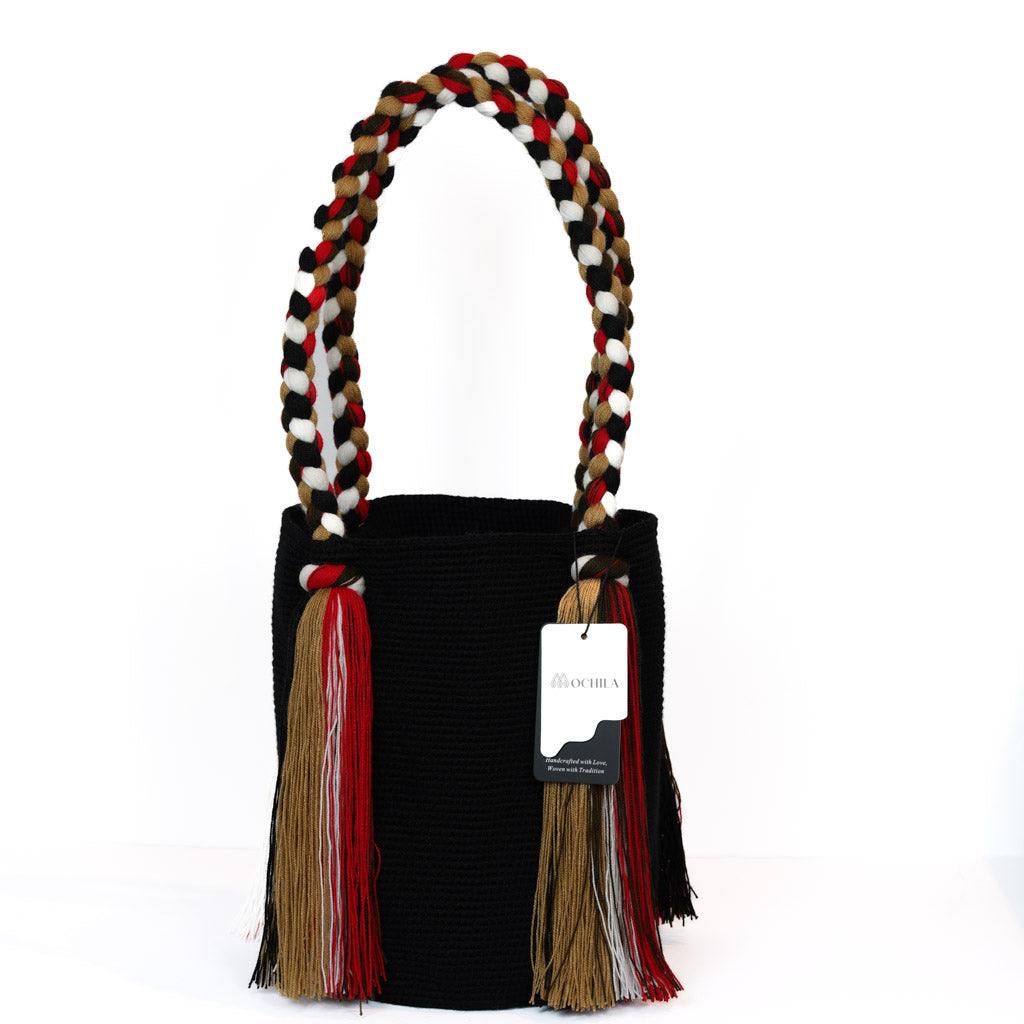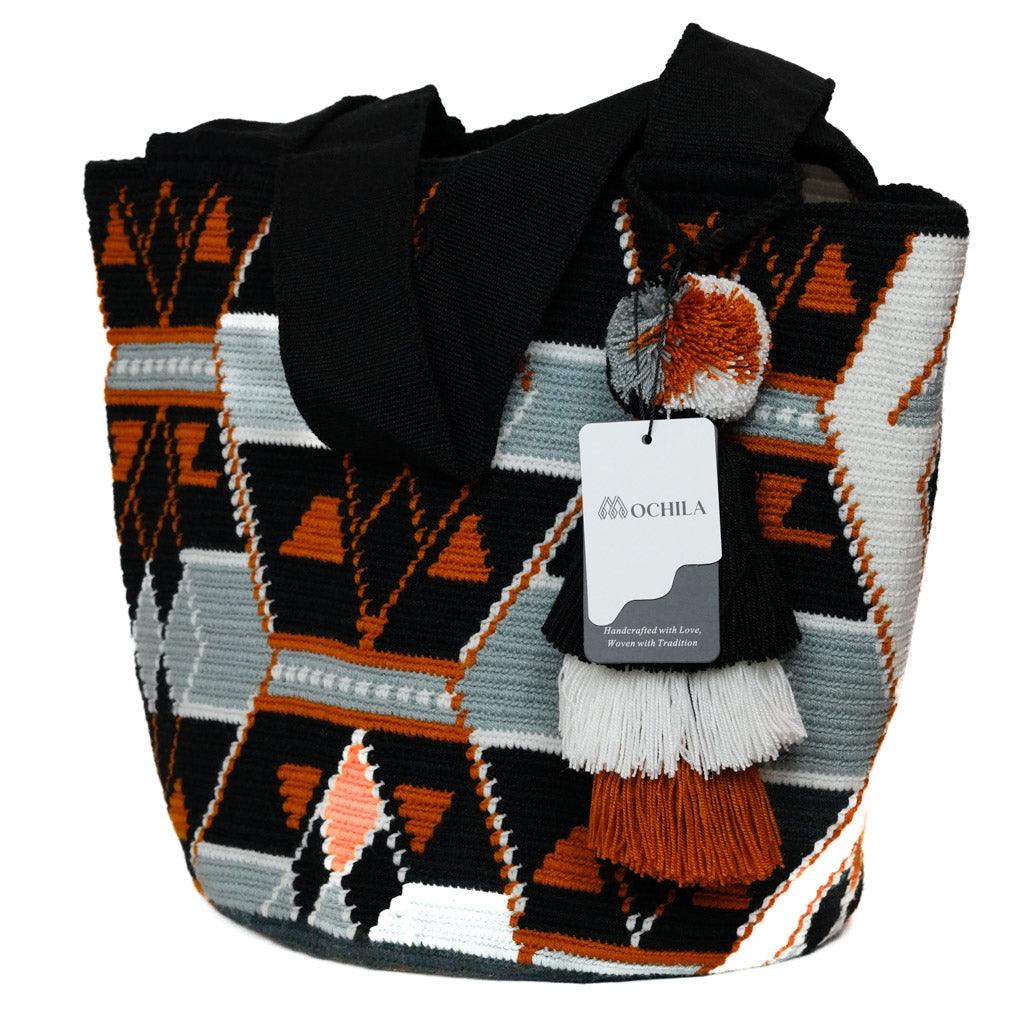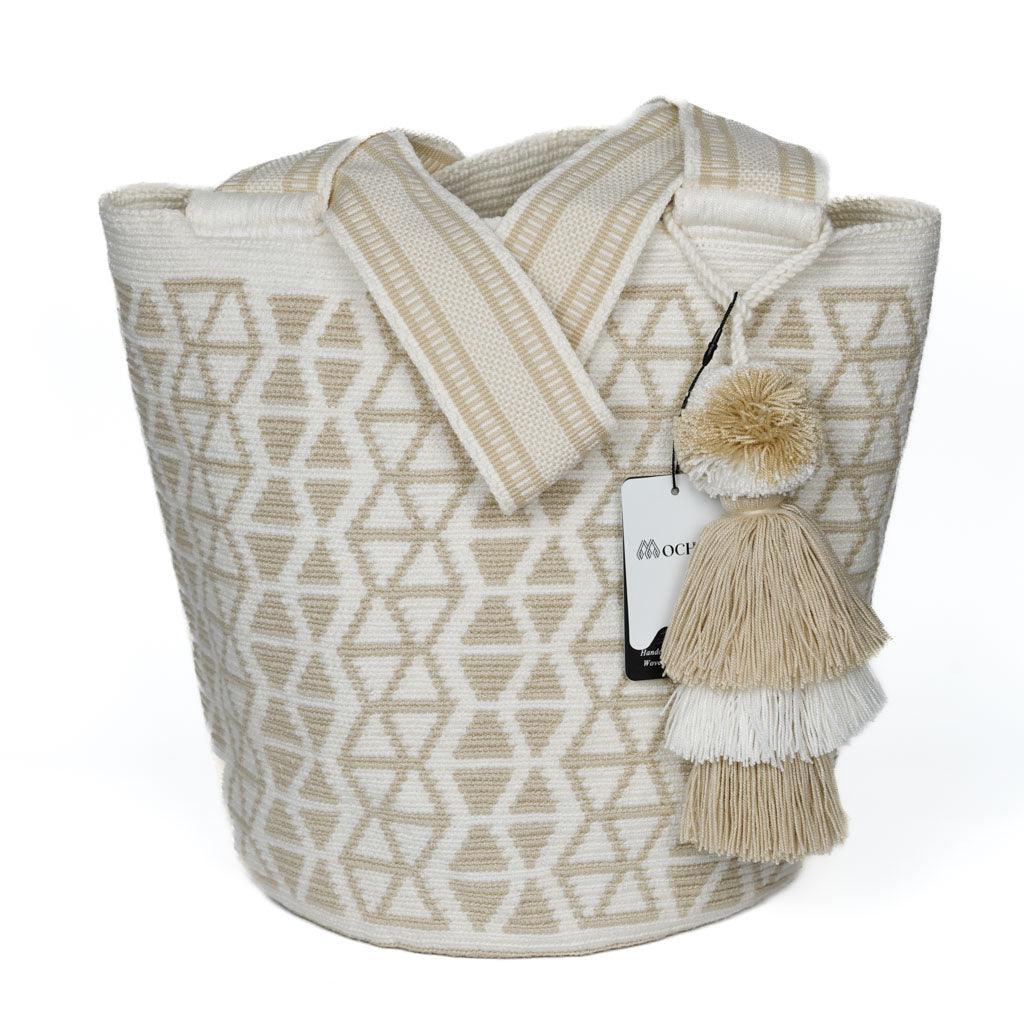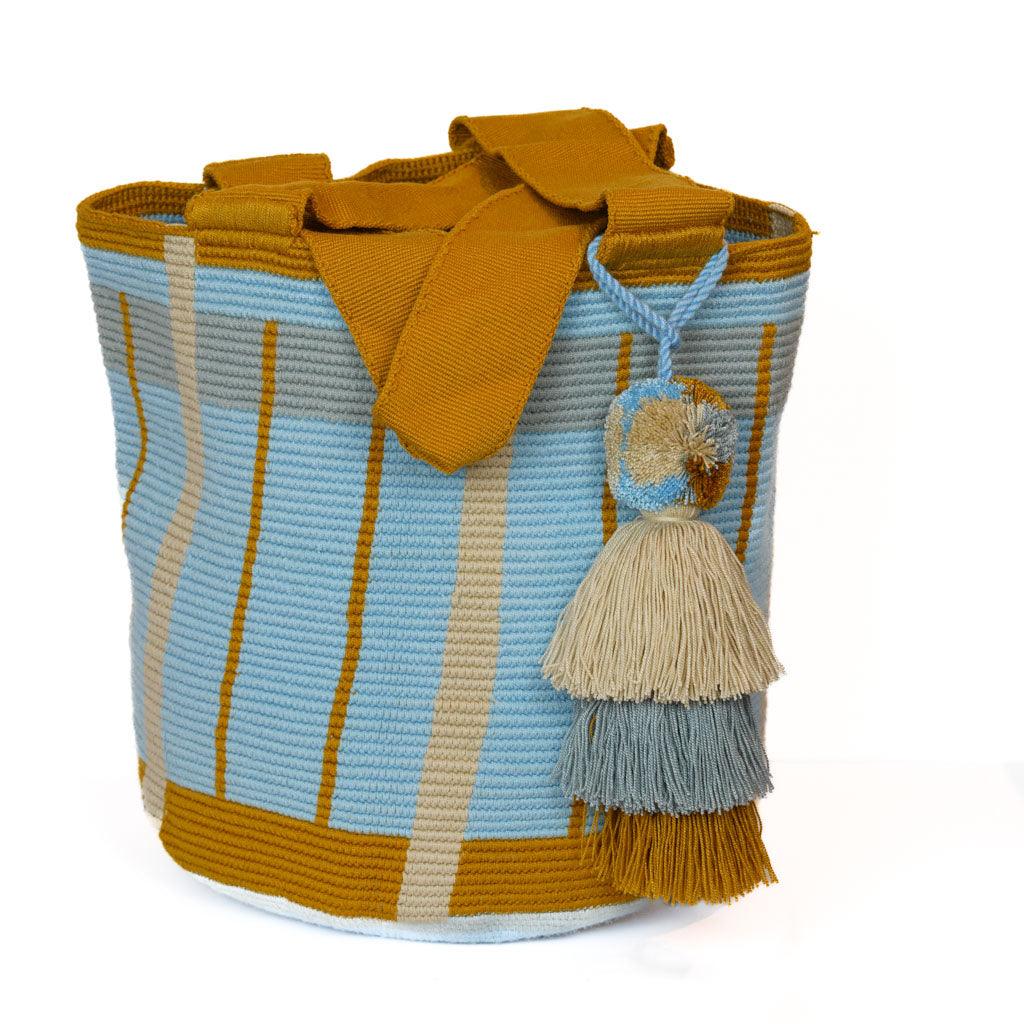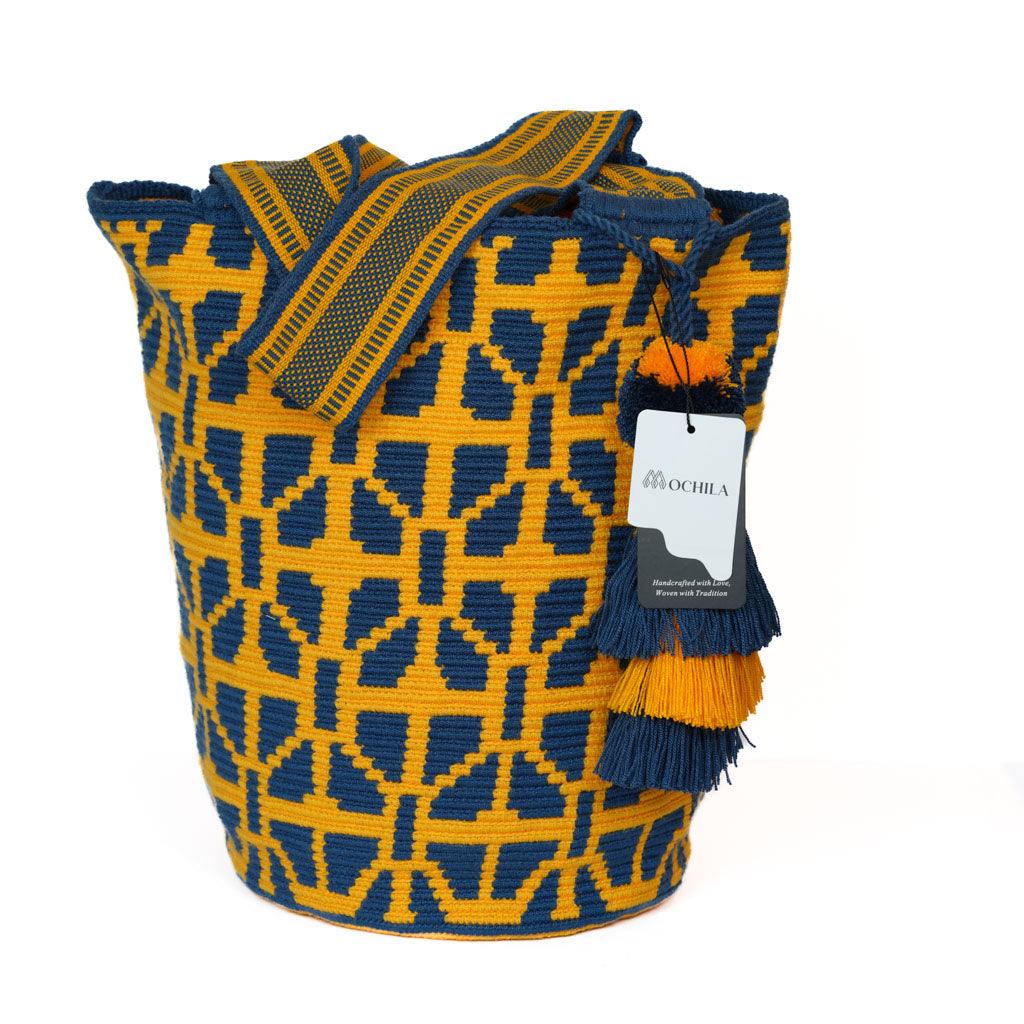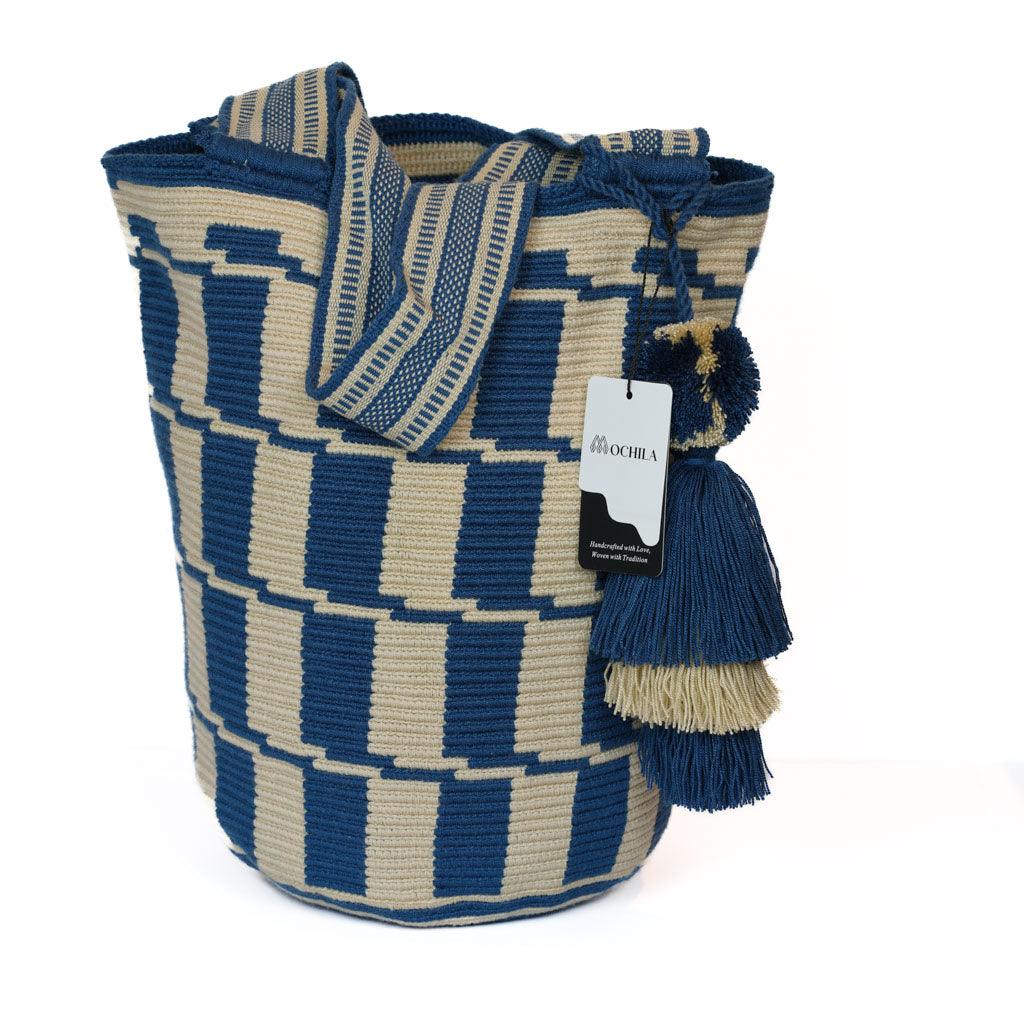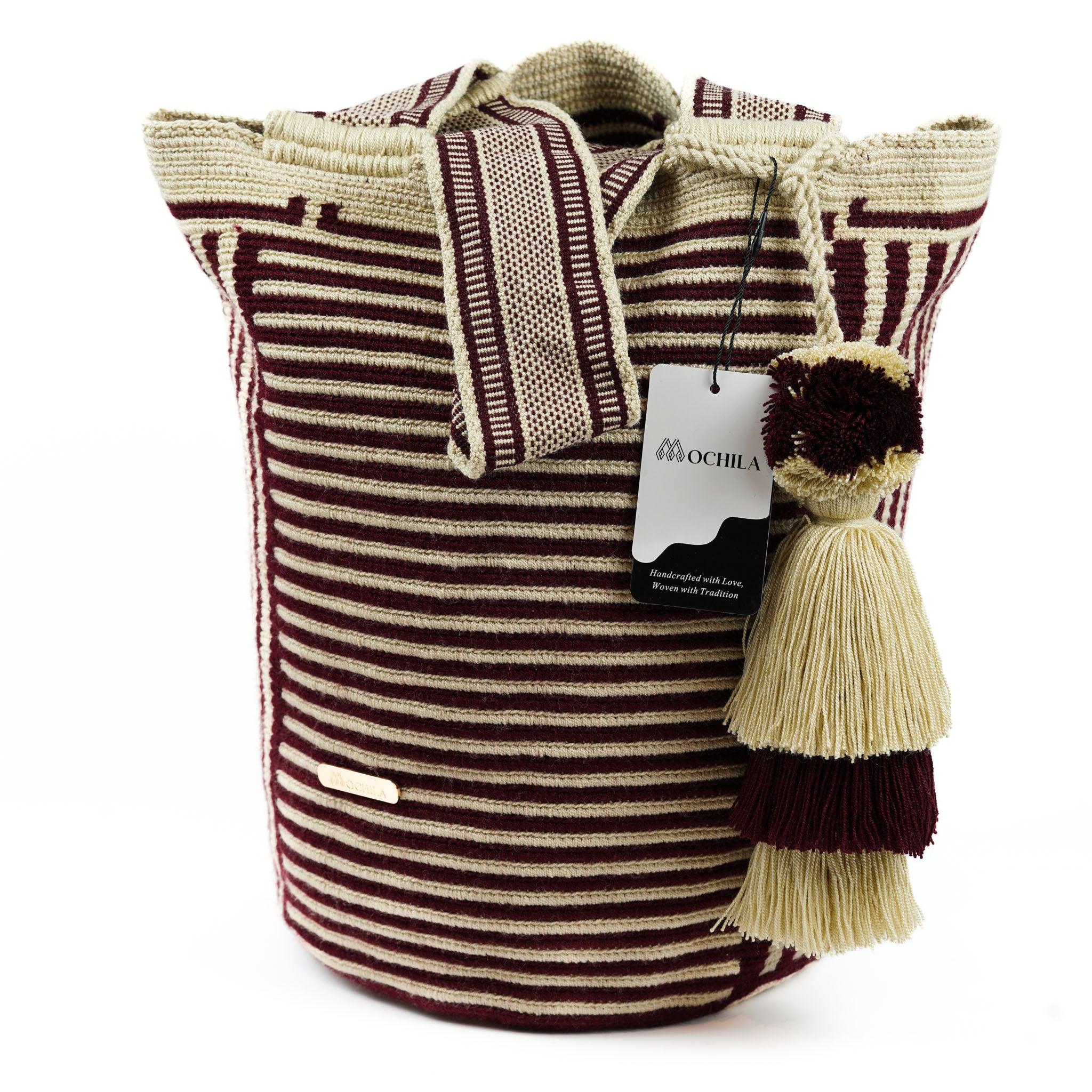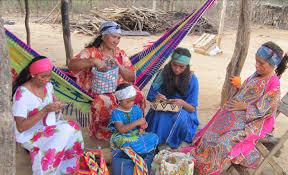
Cultural Heritage: The Untold Story of Wayuu Bags
Wayuu bags, also known as Mochilas, have gained international acclaim for their vibrant colors and intricate patterns. However, behind the aesthetic appeal lies a rich tapestry of cultural heritage that often goes untold. In this blog post, we delve into the untold story of Wayuu bags, exploring their cultural significance and the traditions they represent.
The Wayuu People: A Cultural Overview
The Wayuu are an indigenous community primarily residing in the La Guajira Peninsula, a desert region that spans both Colombia and Venezuela. They have a rich cultural heritage that includes traditional music, dance, and, most notably, weaving. The Mochila Wayuu is more than just a bag; it's a cultural artifact that embodies the Wayuu's history, beliefs, and artistic expression.
Weaving as a Rite of Passage
In Wayuu culture, weaving is not just a skill; it's a rite of passage. Young girls learn the art from their mothers and grandmothers, often creating their first Mochila as a symbol of their transition into womanhood. The ability to weave is considered a highly valuable skill that enhances a woman's status within the community.
The Language of Patterns
Each Wayuu bag is unique, featuring patterns and colors chosen by the artisan. These patterns, known as "Kanaas," are more than just decorative elements; they are a form of language. They can represent familial ties, natural elements, or traditional myths and stories. When you carry a Wayuu bag, you're carrying a piece of storytelling art.
The Social and Economic Impact
The production and sale of Wayuu bags have significant social and economic implications for the Wayuu community. It provides a sustainable source of income and allows the Wayuu to engage with the global market on their own terms. The popularity of these bags has brought attention to the Wayuu's rich cultural heritage, helping to preserve it for future generations.
Ethical Considerations: Preserving Cultural Heritage
As Wayuu bags gain popularity, it's crucial to approach them with ethical considerations in mind. Authentic Wayuu bags are made by artisans who are compensated fairly for their labor. By purchasing directly from reputable sources, you contribute to the preservation of Wayuu cultural heritage.
How to Be a Responsible Consumer
-
Verify Authenticity: Ensure that the bag you're purchasing is an authentic Wayuu Mochila.
-
Support Fair Trade: Look for Fair Trade certifications or buy from sources that pay artisans fairly.
-
Educate Yourself: Learn about the Wayuu culture and the significance of the patterns and colors in your bag.
Conclusion
Wayuu bags are more than just a fashion accessory; they are a symbol of a rich cultural heritage that has been passed down through generations. From the weaving techniques to the patterns and colors, every aspect of a Wayuu bag tells a story. By understanding and appreciating this cultural context, you can be a more responsible consumer and help preserve an invaluable cultural heritage.
Shop Our Collections
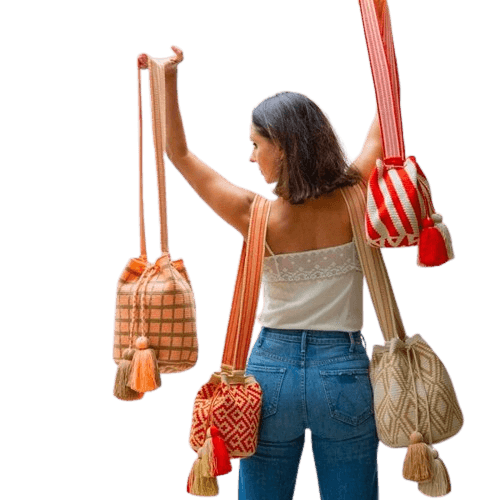
Crossbody Bag Mochilas
Discover the enchanting array of Crossbody bag Mochilas in our collection, each meticulously handwoven by skilled Colombian artisans. ... These large, spacious bags seamlessly combine timeless traditional crafting techniques with contemporary design aesthetics, presenting a stylish statement piece imbued with rich history and flair. Every Crossbody bag Mochila in our collection is a testament to vibrant colors and expressive cultural narratives, each meticulously interwoven into the fabric of the bag, bringing life and style to your wardrobe. Dive into the diverse and colorful world of our Crossbody bag Mochila, where each piece tells a unique story of Colombian heritage and craftsmanship. Whether you're looking for a practical companion for your everyday adventures or a standout accessory to elevate your style, our Crossbody bag Mochila collection offers a wide range of options to suit your individual needs and tastes. Browse through our selection and find the perfect Crossbody bag Mochila that resonates with your sense of style and adds a touch of Colombian spirit to your ensemble.
Featured collection
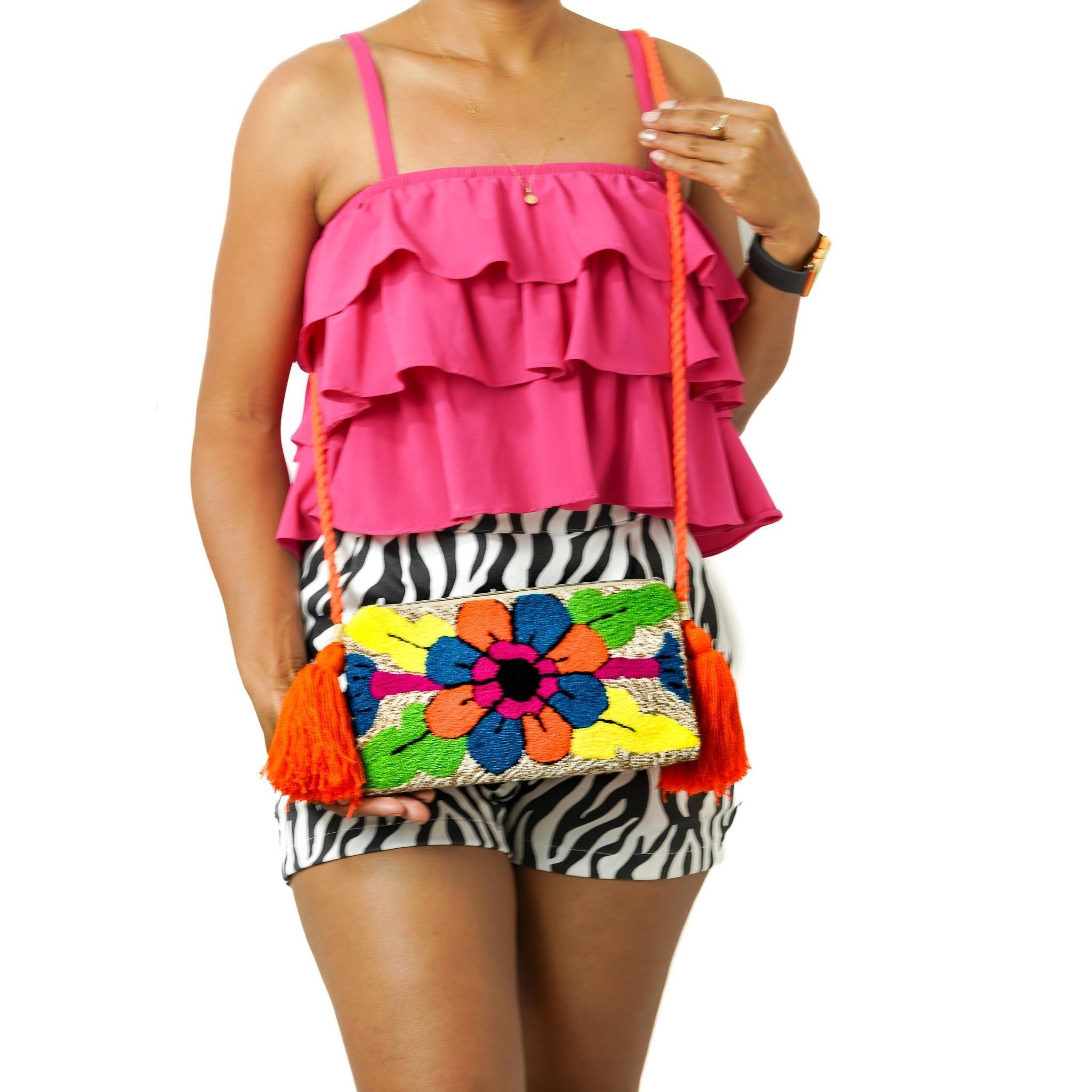
Womens Handbags & Clutches
Discover Mochila's curated collection of Womens Handbags & Clutches, where sophistication meets functionality. ... Each piece in this collection is thoughtfully designed for the modern woman, blending timeless elegance with practical utility. From versatile Crossbody Handbags that transition seamlessly from day to night, to the chic statement Designer Clutches perfect for special occasions, Mochila ensures every woman finds her perfect match. Crafted with the finest materials and impeccable attention to detail, our handbags stand out not just for their beauty, but also their durability. Dive into a world where fashion meets function, and elevate your everyday style with Mochila's exquisite range of Womens Handbags & Clutches.
Featured collection
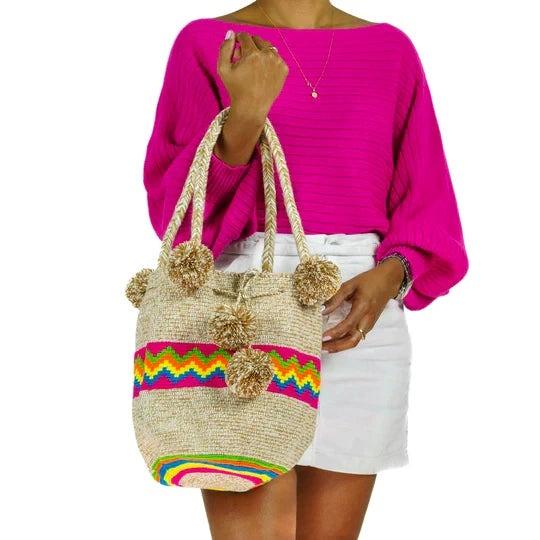
Tote Bag Mochilas
Welcome to our splendid assortment of Tote Bag Mochilas, a harmonious blend of elegance and tradition. ... Each handwoven treasure is crafted meticulously by proficient Wayuu artisans, reflecting the epitome of craftsmanship and the rich cultural heritage of Colombia. Elevate your fashion ensemble with a touch of Colombian artistry encapsulated in our Tote Bag Mochilas, and craft your distinctive style statement. Every Tote Bag Mochila in our collection is a petite marvel, symbolizing the intricate artistry and vibrant traditions of the Wayuu people. Immerse yourself in the exquisite details and bold colors that distinguish our Tote Bag Mochilas, and select the piece that resonates with your personal aesthetic, allowing you to express your unique fashion sense on every occasion.
Featured collection
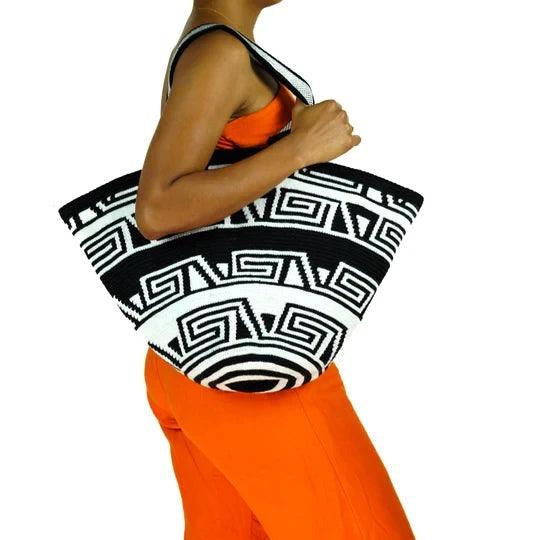
Shoulder Beach Bags
Dive into Mochila's latest collection of Handwoven Beach Bags: the Shoulder Beach Bags. Crafted with sun-soaked outings and coastal adventures in mind ... these Stylish Shoulder Bags for the Beach encapsulate the perfect balance of breezy, vibrant, and effortlessly chic. Meticulously woven with traditional craftsmanship and modern aesthetics, each bag is a testament to Mochila's dedication to quality and style. Not only are they a feast for the eyes, but their ample space ensures you have room for all your beach essentials. Designed for durability, they're the Durable Beach Totes you've been searching for. Perfect for sun, sea, and everything in between. Browse our range now and let your beach escapades be elevated with Mochila's signature touch.

